Madagascar is home to a vast array of unique and diverse bird species, with over 200 species found on the island. These birds range from large and colorful parrots, to small songbirds and even flightless birds.
Madagascar’s birds have adapted to the island’s many distinct habitats, from the dry deciduous forests in the west to the lush rainforests of the east coast.
The variety of birds found in Madagascar is remarkable, and many of them are endemic to the island, meaning they are found nowhere else in the world.
1. Vanga
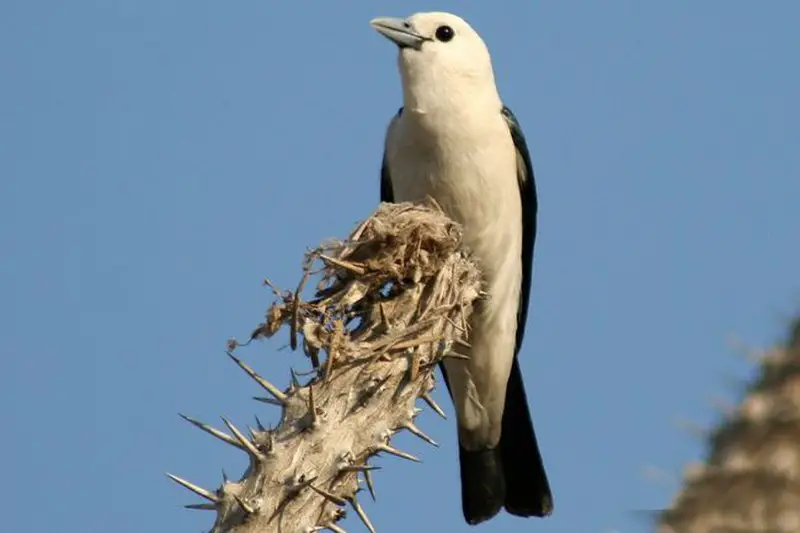
Vanga birds are medium-sized and mostly have shrike-like features. They can be found in Asia, Africa as well as Madagascar from where the family gets its name (vanga).
As recently discovered by molecular techniques, many of these species were earlier classified elsewhere in other families. These birds come with curved bills which help them to feed on insects or small vertebrates like lizards and frogs.
Also their stout legs make it easier for them to perch onto trees or shrubs while hunting for prey. Overall they play an important role in maintaining balance within ecosystems due to their dietary habits & nesting areas.
Scientific classification:
| Kingdom | Animalia |
| Phylum | Chordata |
| Class | Aves |
| Order | Passeriformes |
| Superfamily | Malaconotoidea |
| Family | Vangidae Swainson, 1831 |
2. Crested Coua
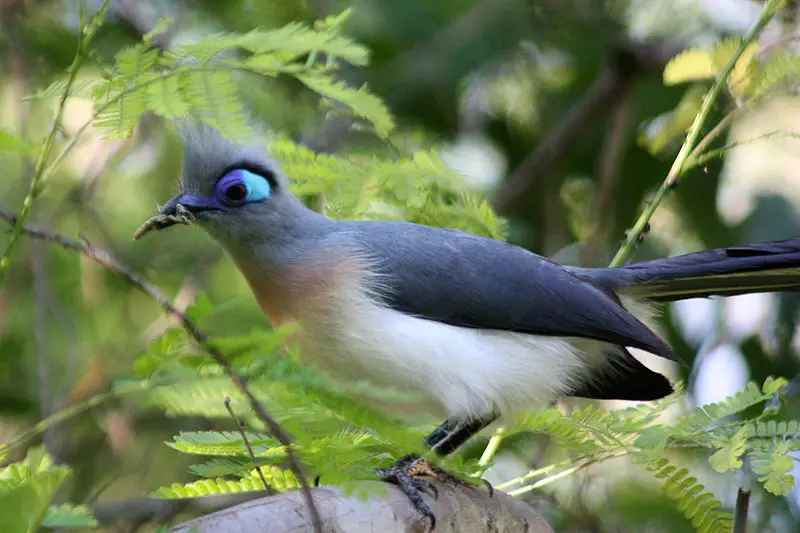
The Crested Coua is an endemic bird species found mainly in the coastal regions of Madagascar. It stands out due to its greenish-grey back and grey head crest, as well as its rufous underparts that give it a unique appearance compared to other birds on the island.
The coua has weak flying capabilities and prefers hopping from branch to branch in high canopies instead of taking flight.
This medium sized cuckoo family member is often seen foraging for food during daylight hours, such as insects or small reptiles like lizards which make up their diet.
Despite being quite common throughout Madagascar, threats remain from hunting by locals who target them with slingshots or traps which could reduce numbers if not managed properly.
Scientific classification:
| Kingdom | Animalia |
| Phylum | Chordata |
| Class | Aves |
| Order | Cuculiformes |
| Family | Cuculidae |
| Genus | Coua |
| Species | C. cristata |
3. Madagascar Fish Eagle
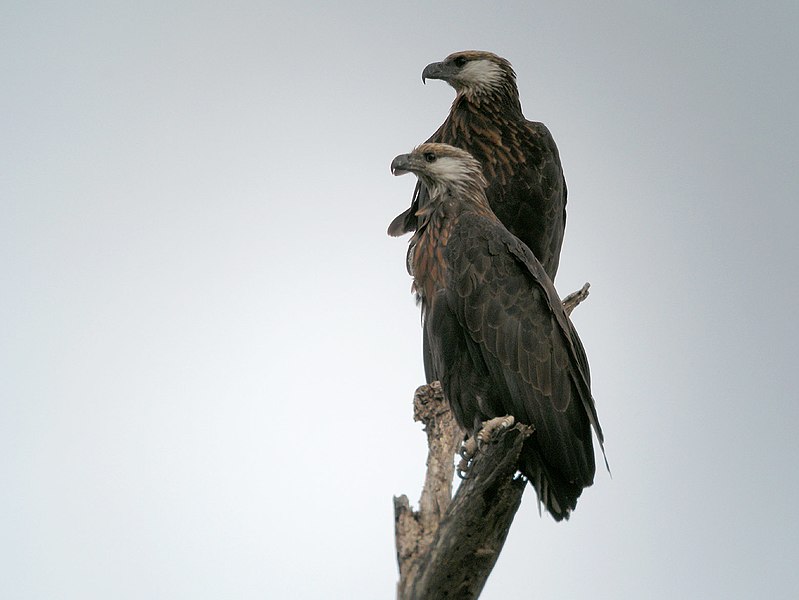
The Madagascar fish eagle is a large bird of prey that inhabits the coastal strip in northwest Madagascar. It has an impressive wingspan of about 63 cm (25 in) and a pale brown head with dark streaks, white cheeks and neck, yellow eyes, black beak and powerful talons.
Its body is mostly grey-brown plumage on the upperparts and paler below. The tail feathers are white at the base which helps to distinguish it from other raptors found in this region.
This majestic species feeds mainly on fish but will also take small mammals such as bats or rodents when available.
As one of only two endemic birds of prey living exclusively within its native range, conservation efforts need to continue for this endangered species so they can remain part of their unique Madagascan environment for generations to come
Scientific classification:
| Kingdom | Animalia |
| Phylum | Chordata |
| Class | Aves |
| Order | Accipitriformes |
| Family | Accipitridae |
| Genus | Haliaeetus |
| Species | H. vociferoides |
4. Malagasy Kingfisher
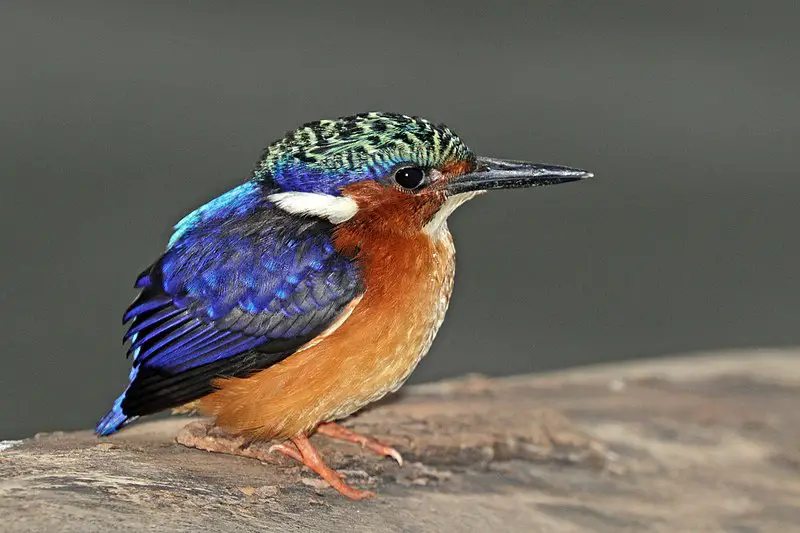
The Malagasy kingfisher is a species of bird in the family Alcedinidae that can be found inhabiting mangrove forests in Madagascar, Mayotte and the Comoros.
It was first described by French naturalists Joseph Eydoux and Paul Gervais back in 1836.
This small songbird has an average length between 11-12 cm long with blue wings, head and breast along with black markings on its eye line which extends to its nape giving it a distinguished look.
They have pale underparts as well as bright orange legs and feet. The Malagasy Kingfisher feeds mainly on insects but will also eat some smaller fish or crustaceans if available near their habitat areas.
Moreover, they are usually quite shy birds who prefer solitude however during breeding season these birds form pairs to nest together.
All things considered ,the Malagasay Kingfishers are one of Madacascar’s most beautiful avian residents.
Scientific classification:
| Kingdom | Animalia |
| Phylum | Chordata |
| Class | Aves |
| Order | Coraciiformes |
| Family | Alcedinidae |
| Subfamily | Alcedininae |
| Genus | Corythornis |
| Species | C. vintsioides |
5. Coua
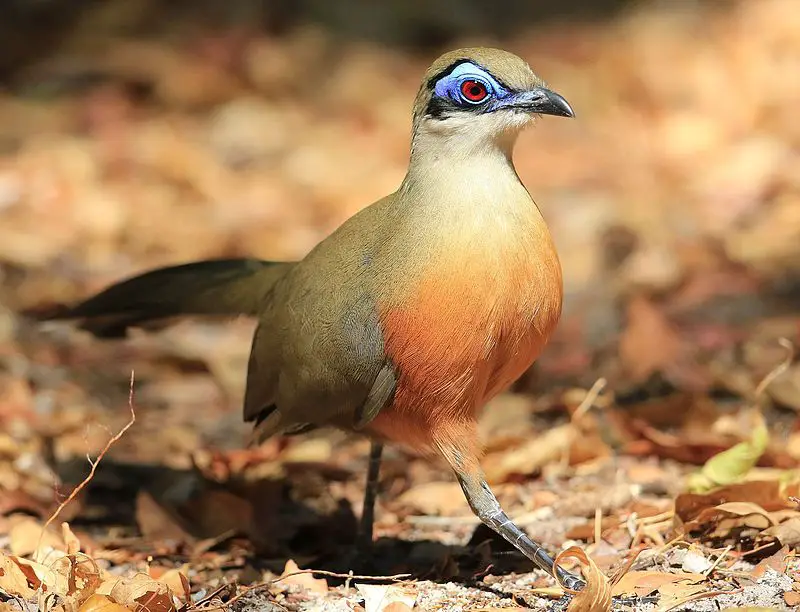
Couas are large birds that belong to the cuckoo family and can only be found in Madagascar. They have vivid coloured skin around their eyes, making them look like African turacos when walking along tree branches.
Couals share a similar habit of clambering through jungles while foraging, whilst other species use gliding flights between tree canopies to move from place to place. Their diet consists mainly of fruits, nuts and insects which they find by searching on the ground or jumping onto branches and trunks.
These birds play an important role in maintaining healthy ecosystems as they help disperse seeds throughout different habitats, providing essential nutrition for many plants’ growth cycles.
Scientific classification:
| Kingdom | Animalia |
| Phylum | Chordata |
| Class | Aves |
| Order | Cuculiformes |
| Family | Cuculidae |
| Genus | Coua Schinz, 1821 |
6. Giant Coua
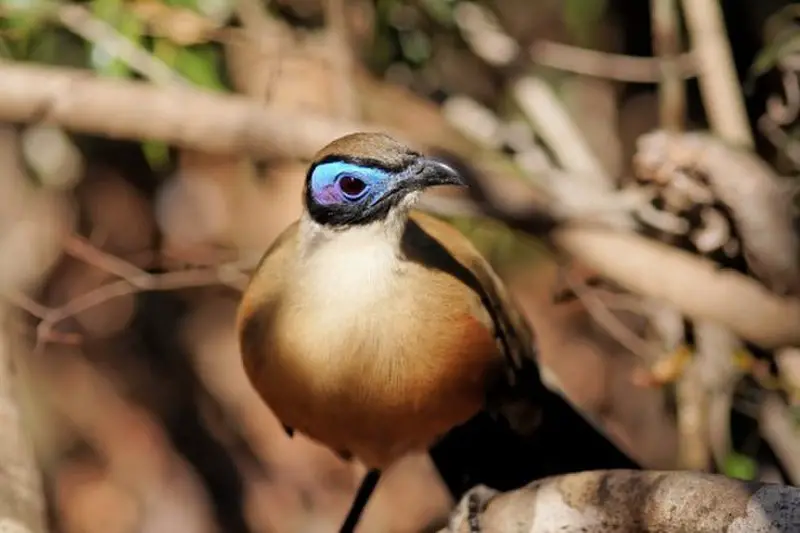
The Giant Coua (Coua gigas) is a species of bird found in the dry forests of western and southern Madagascar. It belongs to the coua genus which has 10 species, more than any other from Madagascar.
This particular bird is listed as Least Concern by IUCN due its wide range and stable population numbers throughout that region despite heavy deforestation. The typical size for this large cuckoo can reach up to 24 cm long with distinct white feathers scattered over their black body, giving them an elegant look.
They feed on fruits such as figs but also small insects like grasshoppers when available. Overall, these amazing birds are an essential part of Madagascan wildlife.
Scientific classification:
| Kingdom | Animalia |
| Phylum | Chordata |
| Class | Aves |
| Order | Cuculiformes |
| Family | Cuculidae |
| Genus | Coua |
| Species | C. gigas |
7. Blue Coua

The Blue Coua is a species of bird that belongs to the Cuckoo family and is endemic to Madagascar. It was first described by Carl Linnaeus in 1766, but since then, only eight or nine out of twelve existing species have survived.
The name for this genus originated from Malagasy language ‘koa’, which means cuckoo. In French it’s known as ‘Coua bleu’. Its feathers are mostly blue with yellowish tinge on its face and head while its wings display grey-blue coloration along with some brown spots near tips.
This species also has small white streaks at the throat area accompanied by white underparts which make them easily distinguishable in their natural habitat.
Scientific classification:
| Kingdom | Animalia |
| Phylum | Chordata |
| Class | Aves |
| Order | Cuculiformes |
| Family | Cuculidae |
| Genus | Coua |
| Species | C. caerulea |
8. Banded Kestrel
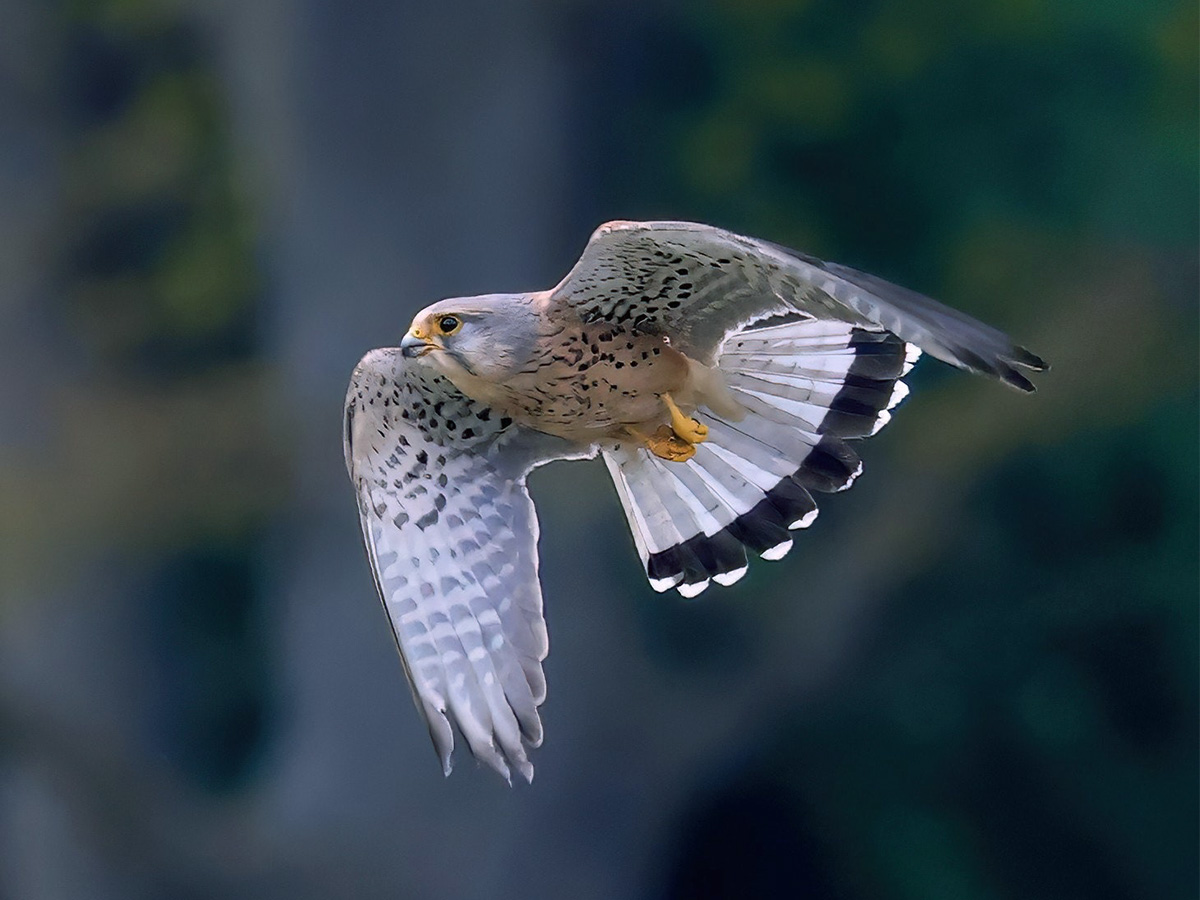
The Banded Kestrel is a bird of prey endemic to Madagascar and belongs to the Falconidae family. It measures 27-30 cm long, has barred underparts and a pale facial stripe with black moustache on both sides.
Its wings are pointed while its tail feathers are banded dark brown and white in color. The upper parts of their body is mostly greyish-brown but they have some reddish barring too.
They feed mainly on small reptiles such as lizards, amphibians like frogs, insects like locusts as well as fruits when available near forests or woodlands where they usually reside in pairs or alone during breeding season between November – April.
During this period males display courtship behavior by flying above its partner while calling out loudly before finally mating together afterwards.
Scientific classification:
| Kingdom | Animalia |
| Phylum | Chordata |
| Class | Aves |
| Order | Falconiformes |
| Family | Falconidae |
| Genus | Falco |
| Species | F. zoniventris |
9. Madagascar Harrier-Hawk
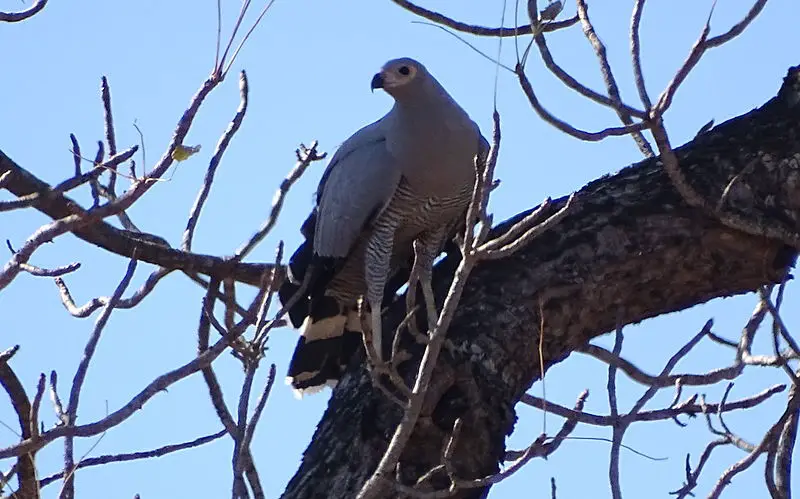
The Madagascar harrier-hawk is an impressive bird of prey found only in the island nation of Madagascar. It has a wingspan up to two feet and a long, black tail with one broad grey band running down the middle.
The upper part of its body is usually gray while its chest and stomach are white or light brown. Its eyes are yellow and it displays striking facial feathers which set it apart from other hawks.
This species mainly feeds on small mammals, birds, reptiles as well as insects like locusts but also occasionally scavenges for carrion if necessary.
They make their nests high up in trees where they breed annually during springtime producing clutches ranging from 2–4 eggs per season . These magnificent creatures have been listed under Least Concern by IUCN due to their wide distribution across much of Madagascar’s habitats making them quite common there despite some threats such as habitat loss through deforestation that still persist today
Scientific classification:
| Kingdom | Animalia |
| Phylum | Chordata |
| Class | Aves |
| Order | Accipitriformes |
| Family | Accipitridae |
| Genus | Polyboroides |
| Species | P. radiatus |
10. Crested Drongo
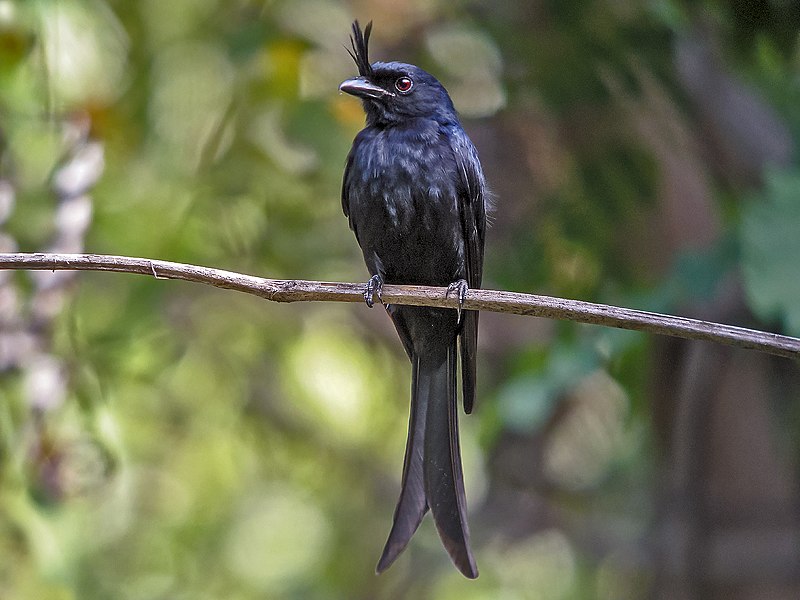
The Crested Drongo is a beautiful passerine bird belonging to the Dicruridae family. It has an impressive black body with a shimmering bluish-green sheen, as well as a distinctive crest on its forehead and forked tail.
There are two subspecies of this species; D. f. forficatus which can be found in Madagascar and D. f for potior which is larger and native to Comoro Islands.
This specie thrives in both dry and humid lowland forests as well as open savannah country, making it very adaptable to different environments .
They typically feed on insects but also hunt small birds or lizards if they have too. The crested drongo is truly remarkable creature that people admire all over the world.
Scientific classification:
| Kingdom | Animalia |
| Phylum | Chordata |
| Class | Aves |
| Order | Passeriformes |
| Family | Dicruridae |
| Genus | Dicrurus |
| Species | D. forficatus |
Also Featured In: Endemic Sri Lanka Birds,
11. Madagascar Cuckoo-Hawk
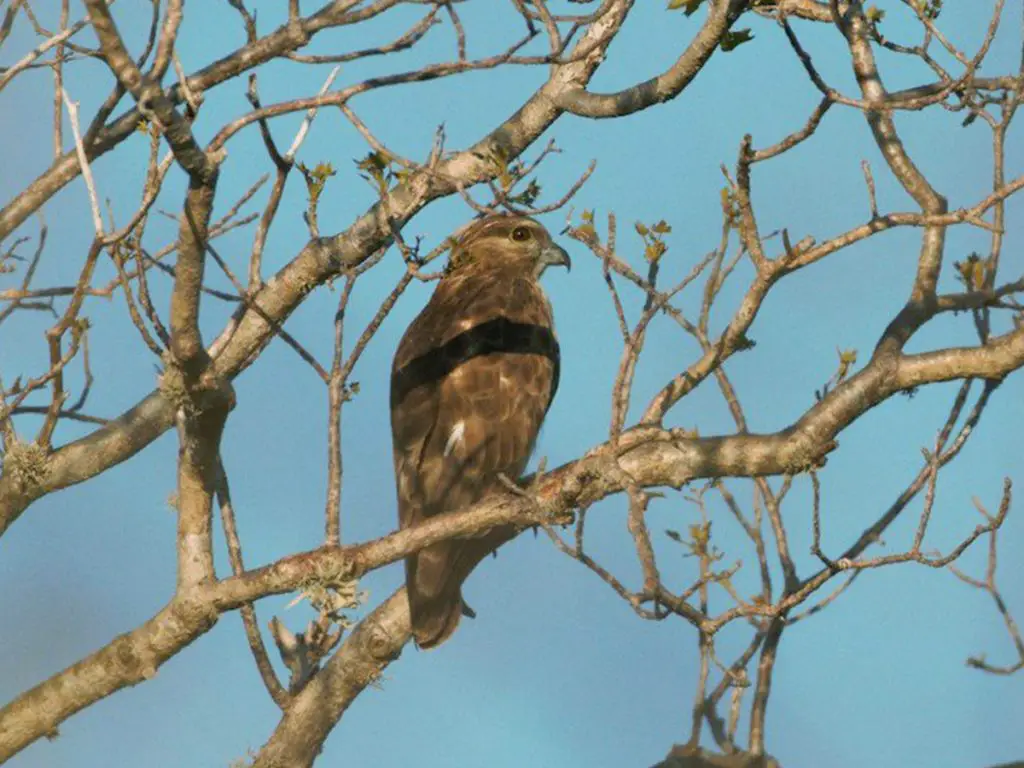
The Madagascar cuckoo-hawk is a bird of prey found exclusively on the island of Madagascar. It has dark brown upperparts that are paler around its head, and an off white rump.
Its underparts are mainly white with greyish tones in the breast and sides of lower body areas. This raptor species hunts smaller birds using stealthy tactics to surprise their unsuspecting victims before quickly snatching them up for food.
They often hunt in pairs or family groups which can be seen soaring over forests and savannahs looking for potential meals below. The diet also includes insects such as grasshoppers, beetles, moths, butterflies and wasps making it quite a versatile hunter.
With its unique colouring this beautiful bird stands out among other avian life in Madagascar where it calls home – it’s no wonder they’ve been nicknamed ‘Madagascar Baza’.
Scientific classification:
| Kingdom | Animalia |
| Phylum | Chordata |
| Class | Aves |
| Order | Accipitriformes |
| Family | Accipitridae |
| Genus | Aviceda |
| Species | A. madagascariensis |
12. Madagascan Blue Pigeon
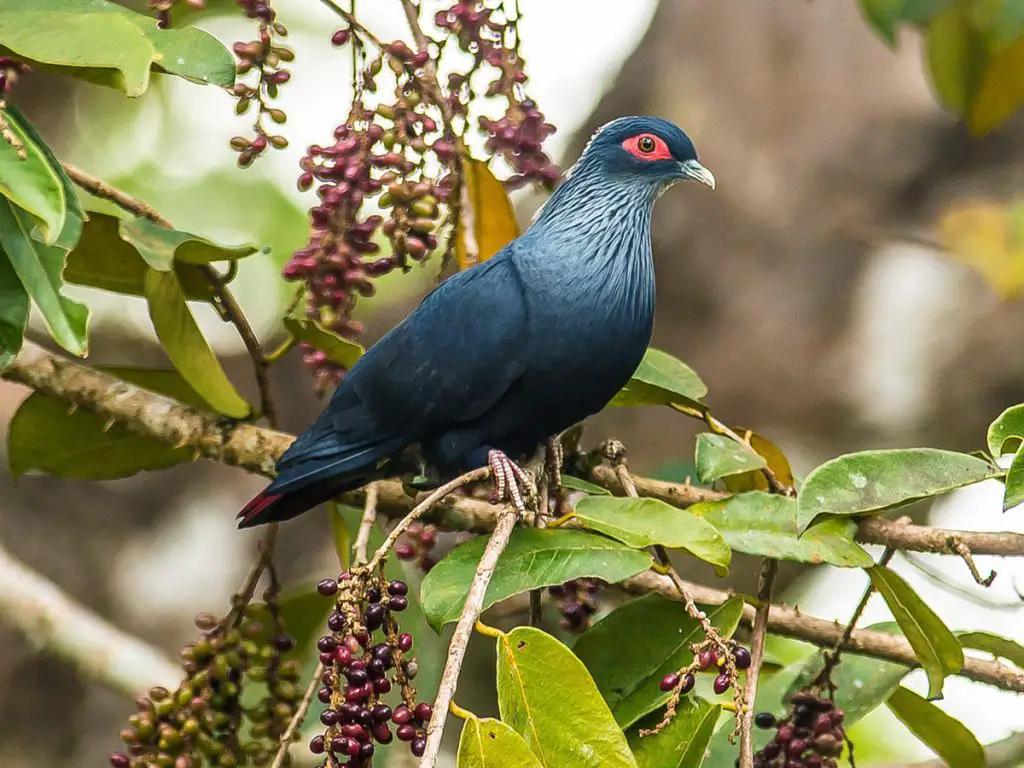
The Madagascar blue pigeon is a species of bird in the family Columbidae that is endemic to northern and eastern Madagascar. It was first described by French zoologist Mathurin Jacques Brisson in 1760, who noted its close relation to other two extant species of blue pigeons found on Comoros Island and Seychelles Islands respectively.
The Madagascan blue pigeon has bright cobalt-blue feathers with white barring underneath while its legs are red or orange coloured.
Its diet consists mainly of fruit, seeds, buds as well as small invertebrates such as snails which it finds on trees and bushes around water sources like streams and rivers.
These birds prefer living near humid areas at low altitudes but can also be seen up to 1,500 metres above sea level if there are enough food resources available for them.
Scientific classification:
| Kingdom | Animalia |
| Phylum | Chordata |
| Class | Aves |
| Order | Columbiformes |
| Family | Columbidae |
| Genus | Alectroenas |
| Species | A. madagascariensis |
13. Red Fody
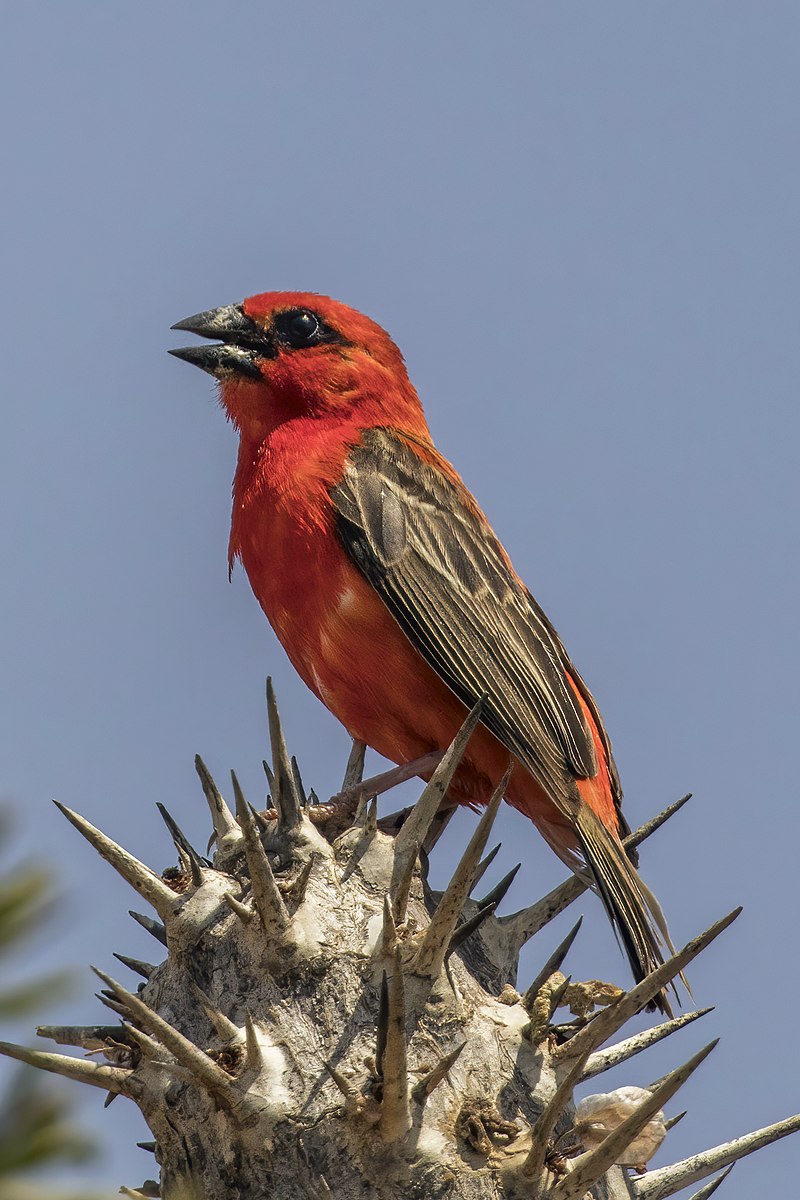
The Red Fody is a small bird native to Madagascar and introduced to other islands in the Indian Ocean.
It has an attractive red plumage and can be seen in various habitats, including grasslands, forests, scrubland as well as urban areas.
Though widespread throughout its range, it is still considered vulnerable due to human activity leading to habitat destruction.
The International Union for Conservation of Nature (IUCN) have assessed this species’ conservation status at “least concern” because of their high population numbers despite ongoing threats like deforestation and over-hunting by humans.
It feeds on insects but also enjoys eating fruits like figs and mangoes which makes them popular with farmers near crop fields.
Scientific classification:
| Kingdom | Animalia |
| Phylum | Chordata |
| Class | Aves |
| Order | Passeriformes |
| Family | Ploceidae |
| Genus | Foudia |
| Species | F. madagascariensis |
14. Madagascar Green Pigeon

The Madagascar green pigeon is a beautiful species of bird that can be found in Madagascar, Comoros, and Mayotte. It inhabits subtropical or tropical dry forests and subtropical or tropical moist lowland forest habitats.
It has a length of about 24 cm with the head, neck and upperparts being grey-green on both sexes while their bellies are yellowish-white. The tail feathers have white tips which makes it easily recognizable from other pigeons.
Its diet mainly consists of fruits like figs as well as blossoms and buds when available seasonally. They also feed on invertebrates such as caterpillars occasionally for protein intake.
These birds roost in flocks at night to reduce predation risk by hawks during daylight hours ,which gives us an opportunity to observe them closely in large numbers if lucky enough.
Scientific classification:
| Kingdom | Animalia |
| Phylum | Chordata |
| Class | Aves |
| Order | Columbiformes |
| Family | Columbidae |
| Genus | Treron |
| Species | T. australis |
15. Madagascar Pochard
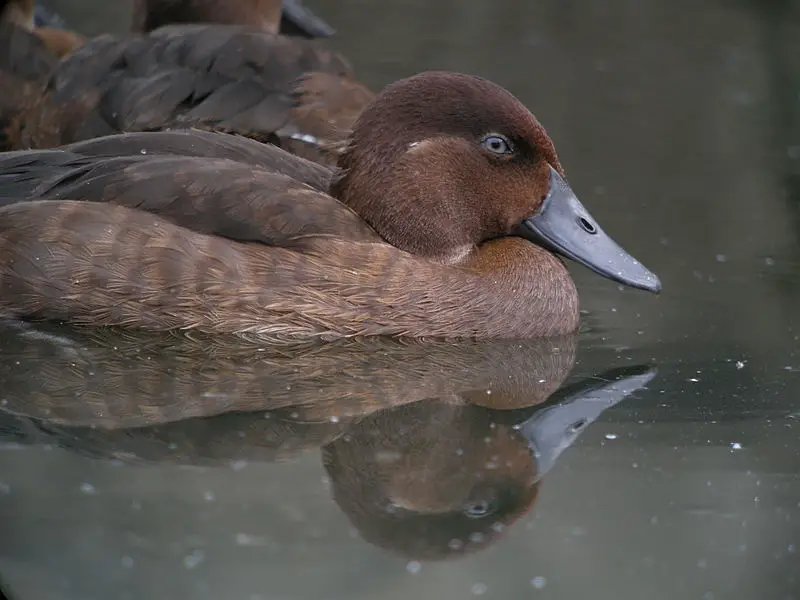
The Madagascar pochard is an extremely rare diving duck of the genus Aythya. It was thought to be extinct in the late 1990s, but rediscovered near Bemanevika in 2006.
This species has a black bill and head with white cheeks, mottled brownish-black upperparts and grey breast. In 2017 it had its own captive breeding program which produced around 90 individuals.
The re-introduction into suitable areas within Lake Alaotra have been successful so far, helping this species recover from extinction.
They are now listed as critically endangered on IUCN Red List due to their small population size and restricted range – making them vulnerable to any pollutants or extreme weather conditions that may arise in future years.
Scientific classification:
| Kingdom | Animalia |
| Phylum | Chordata |
| Class | Aves |
| Order | Anseriformes |
| Family | Anatidae |
| Genus | Aythya |
| Species | A. innotata |
16. Greater Vasa Parrot
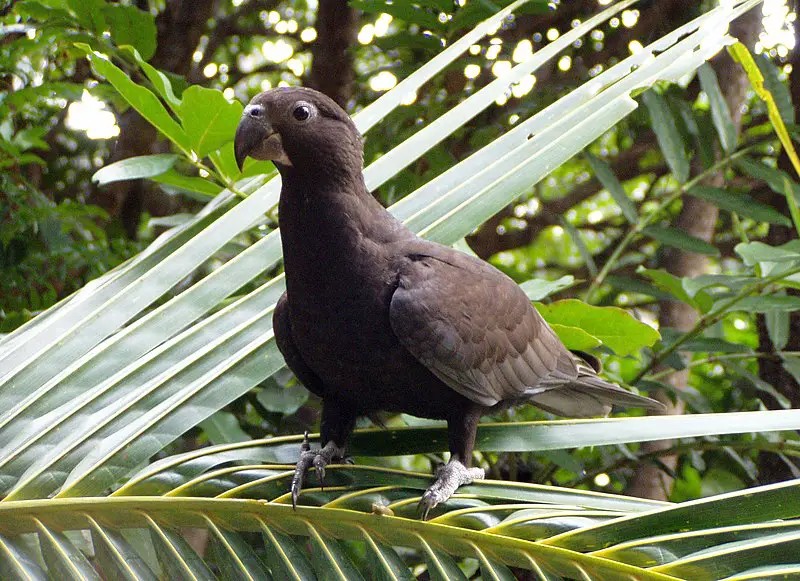
The Greater Vasa Parrot (Coracopsis vasa) is a beautiful and unique bird native to Madagascar and the Comoros. It was first described by English zoologist George Shaw in 1812, with three subspecies recognized – C.
v. vasa from Madagascar, C.v nana from Anjouan Island of the Comoros Islands, and C.v goliathi from Grande-Comore Island of the same archipelago.
The species belongs to genus Mascarinus according to some authorities.
These birds are medium sized parrots known for their striking colors – black head plumage streaked white while its underside being blueish grey or olive green coloration adorned with yellow highlights on wings ans tail feathers; they have bright orange eyes.
They nest in tree cavities laying 2–5 eggs usually during rainy season between November & April when food availability is maximum.
Their diet consists mainly of fruits but also includes seeds , buds etc making them omnivores .
Scientific classification:
| Kingdom | Animalia |
| Phylum | Chordata |
| Class | Aves |
| Order | Psittaciformes |
| Family | Psittrichasiidae |
| Genus | Coracopsis |
| Species | C. vasa |
17. Elephant Bird
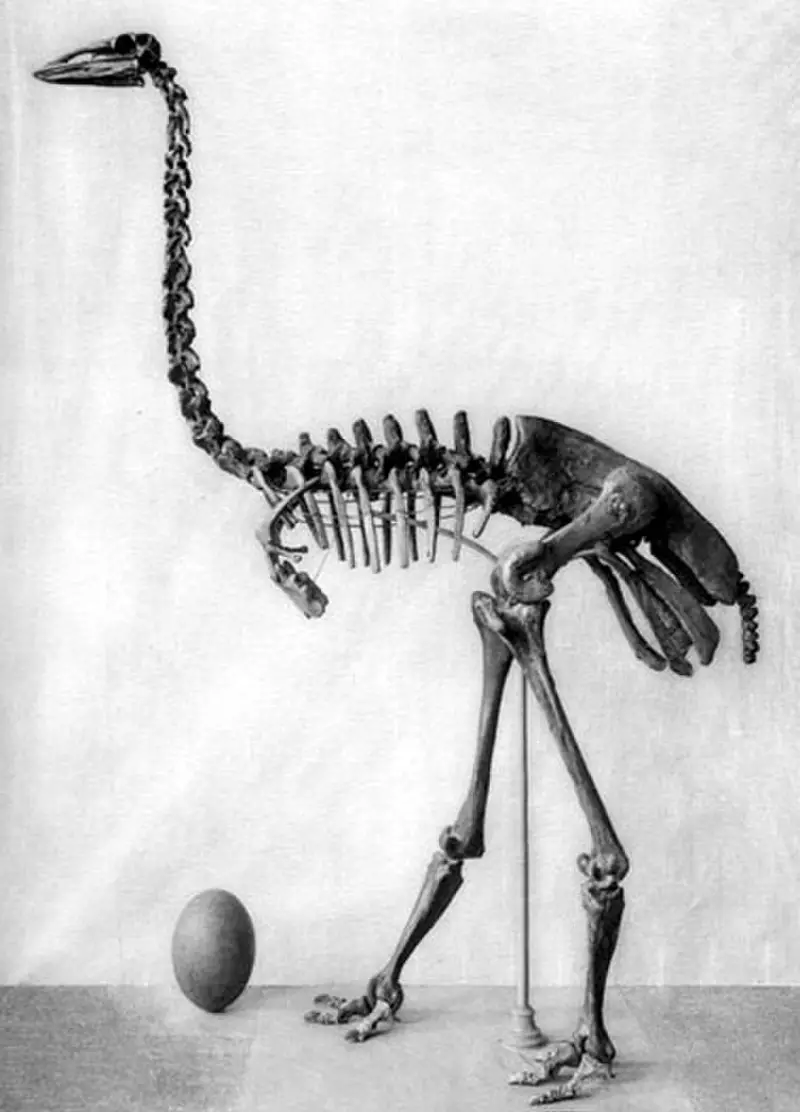
Elephant birds once roamed the island of Madagascar, belonging to an extinct family of flightless Ratites. They were close geographically to ostriches and probably became extinct around 1000-1200 CE due to human activity.
Three genera made up this species: Mullerornis, Vorombe and Aepyornis. These giant birds could reach a height up to 10 feet tall; their eggs also grew very large compared with other bird species – about one hundred times bigger than a chicken egg.
Unfortunately these impressive creatures are no longer found in our world today – but they will remain forever memorialized as part of Madagascar’s natural history.
Scientific classification:
| Kingdom | Animalia |
| Phylum | Chordata |
| Class | Aves |
| Infraclass | Palaeognathae |
| Clade | Novaeratitae |
| Order | †Aepyornithiformes Newton, 1884[1] |
| Family | †Aepyornithidae Bonaparte, 1853[1] |
18. Malagasy Coucal
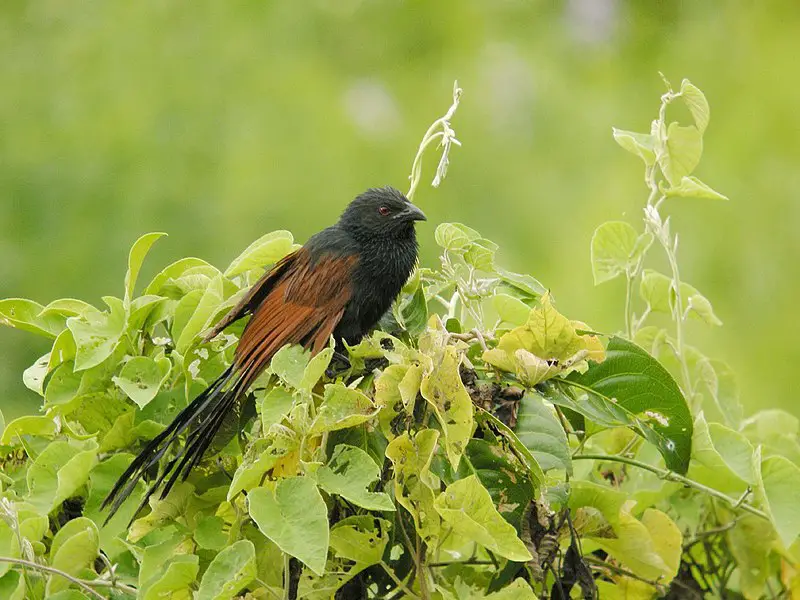
The Malagasy coucal is a species of cuckoo found in Madagascar and the Seychelles. It lives amid dense vegetation, such as subtropical or tropical moist lowland forests, mangrove forests, rough grasslands, marshes and reedbeds.
Its size varies from 28-35 cm long with dark brown upperparts and black underparts. The tail has white tips on its feathers that can be seen when it flies away quickly.
This bird makes loud calls to attract mates during breeding season which usually starts around October/November until April/May every year.
The female lays up to four eggs at once on the ground while both parents take turns incubating them for 14 days before hatching takes place.
All in all this beautiful creature adds an incredible amount of beauty to Madagascar’s wildlife.
Scientific classification:
| Kingdom | Animalia |
| Phylum | Chordata |
| Class | Aves |
| Order | Cuculiformes |
| Family | Cuculidae |
| Genus | Centropus |
| Species | C. toulou |
19. Madagascar Grebe
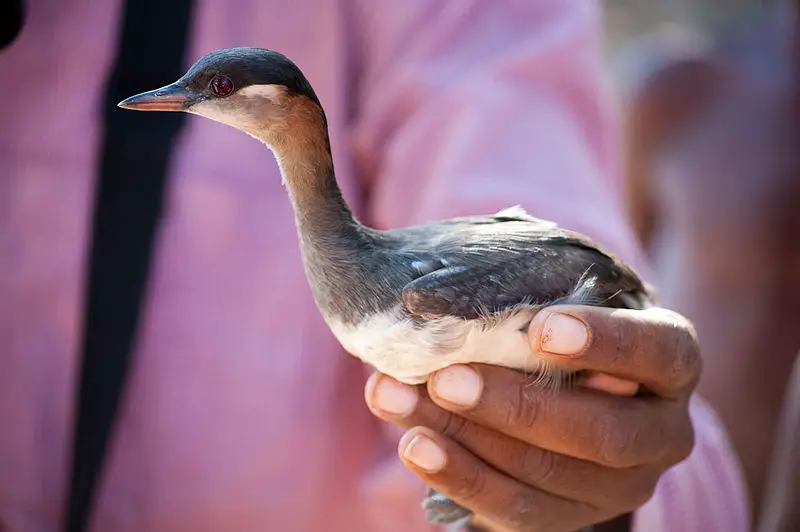
The Madagascar grebe is a species of grebe found only in western and central Madagascar. Vulnerable to habitat loss, predation by carnivorous fish, and competition with introduced species, the population of this bird has been estimated at less than 5,000 individuals.
The binomial name commemorates Austrian ornithologist August von Pelzeln. These birds measure around 33 cm (13 inches) long and have an overall dark gray colouring on their upperparts as well as white underparts which are patterned lightly with speckles or stripes depending on the individual’s sex.
They feed mainly on small fish but will also take crustaceans from time to time during its foraging trips into shallow waters near shorelines.
Scientific classification:
| Kingdom | Animalia |
| Phylum | Chordata |
| Class | Aves |
| Order | Podicipediformes |
| Family | Podicipedidae |
| Genus | Tachybaptus |
| Species | T. pelzelnii |
20. Henst’s Goshawk
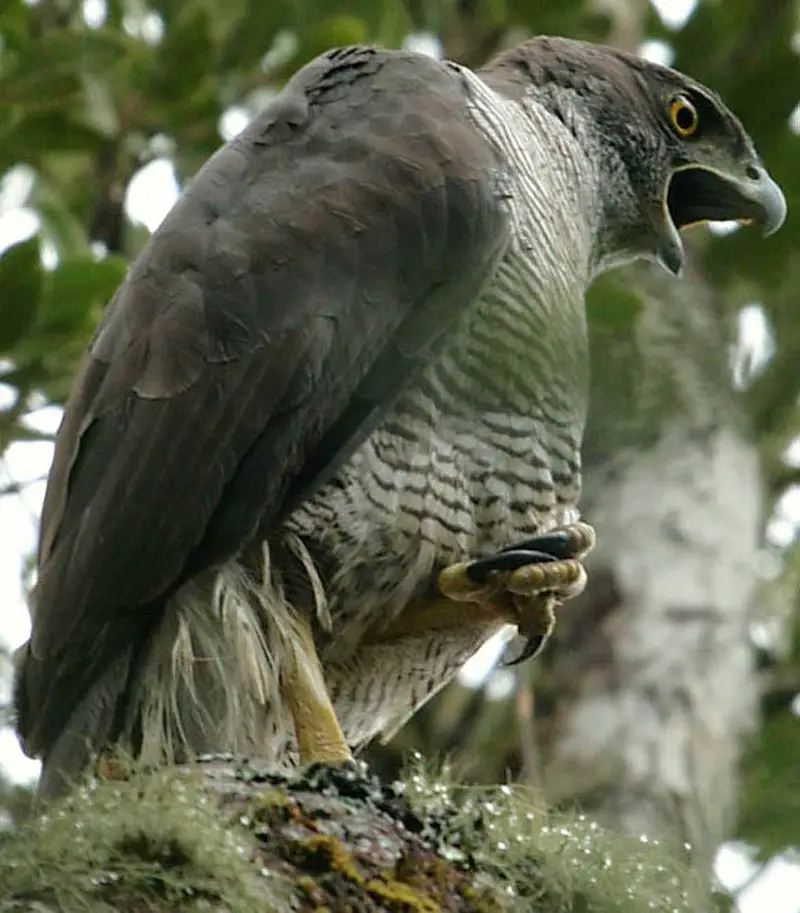
Henst’s goshawk is a species of bird of prey that is only found on the island of Madagascar. It has long wings and tail, as well as powerful talons for hunting.
Its natural habitats are subtropical or tropical dry forests, submontane and montane evergreen forest up to 3100m in altitude. This obligate forest specialist hunts small mammals, birds and reptiles during the day but its population density across Madagascar makes it rarely seen.
Threats to this species include habitat loss due to deforestation which also reduces their food sources making them more vulnerable than other raptors in similar areas with less threats from human activities; however conservation efforts such as reforestation could help protect Henst’s Goshawks into the future.
Scientific classification:
| Kingdom | Animalia |
| Phylum | Chordata |
| Class | Aves |
| Order | Accipitriformes |
| Family | Accipitridae |
| Genus | Accipiter |
| Species | A. henstii |
21. Madagascar Cuckooshrike
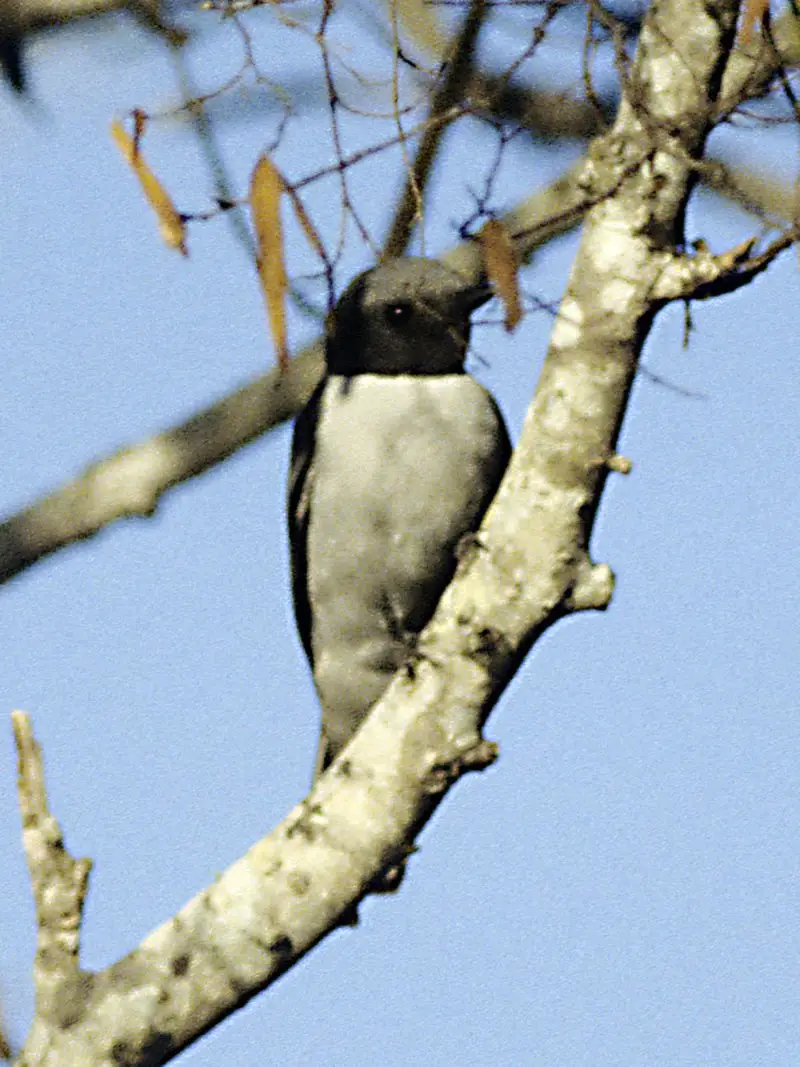
The Madagascar cuckooshrike is a species of bird belonging to the family Campephagidae. It has an ashy colouration and can be found in both dry and moist lowland forests in Madagascar, as well as Mayotte.
While it shares features with its cousin, the Comoros Cuckooshrike, some consider them distinct species; however further research needs to be done on this matter.
These birds have strong legs which they use for climbing trees while searching for insects or other food items such as fruit and seeds.
They also build their nests out of twigs near tree branches high above in the canopy layer where possible predators are less likely to reach them. Conservation efforts must continue if we want these unique creatures around us forever.
Scientific classification:
| Kingdom | Animalia |
| Phylum | Chordata |
| Class | Aves |
| Order | Passeriformes |
| Family | Campephagidae |
| Genus | Ceblepyris |
| Species | C. cinereus |
22. Brown Mesite
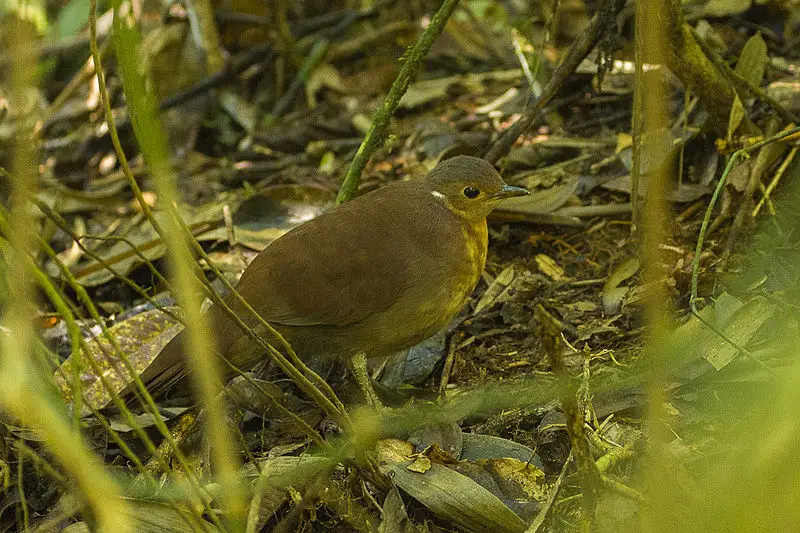
The Brown Mesite is a ground-dwelling bird native to Madagascar and classified as vulnerable by the IUCN. It has an average length of about 10 inches, with brown feathers along its wings and back, white stripes on either side of its neck, and a barred tail.
Its diet consists mainly of insects such as grasshoppers, beetles and caterpillars which it forages from the forest floor during the day. Due to habitat destruction from deforestation in certain areas, their numbers have been declining over time making them an endangered species.
Conservation efforts are being implemented however; including initiatives like reforestation projects that can help preserve this unique creature’s home range so future generations may continue to observe these remarkable birds in their natural habitats.
Scientific classification:
| Kingdom | Animalia |
| Phylum | Chordata |
| Class | Aves |
| Order | Mesitornithiformes |
| Family | Mesitornithidae |
| Genus | Mesitornis |
| Species | M. unicolor |
23. Namaqua Dove
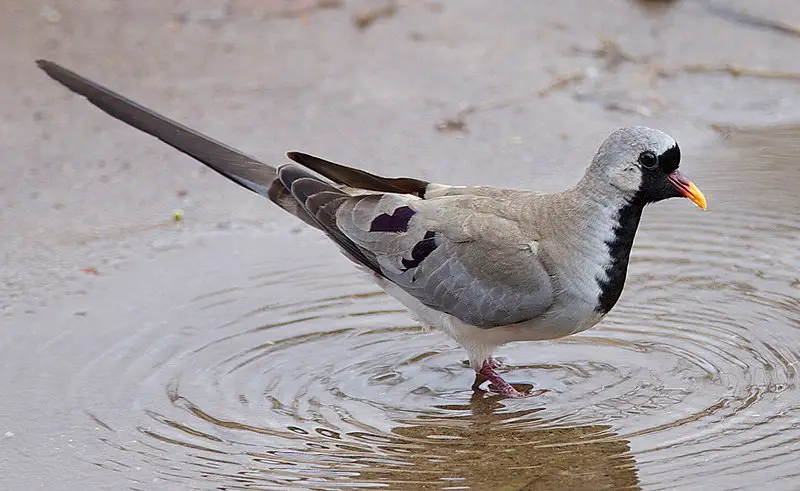
The Namaqua dove is a small pigeon that inhabits much of Sub-Saharan Africa, as well as Arabia and Madagascar.
It is the only species in its genus Oena, which has close affinities with the doves from Turtur.
Described for science by French zoologist Mathurin Jacques Brisson back in 1760, it typically measures between 26 to 28 cm long and boasts distinctive reddish plumage on its head, neck and breast region.
Its diet consists mainly of grains such as millet or wheat; however they may also feed on insects during dry spells when food sources are scarce.
The population size remains stable overall but localised declines have been observed due to human activities like habitat destruction and hunting for subsistence use or sport purposes.
Scientific classification:
| Kingdom | Animalia |
| Phylum | Chordata |
| Class | Aves |
| Order | Columbiformes |
| Family | Columbidae |
| Genus | Oena Swainson, 1837 |
| Species | O. capensis |
24. Madagascar Pygmy Kingfisher
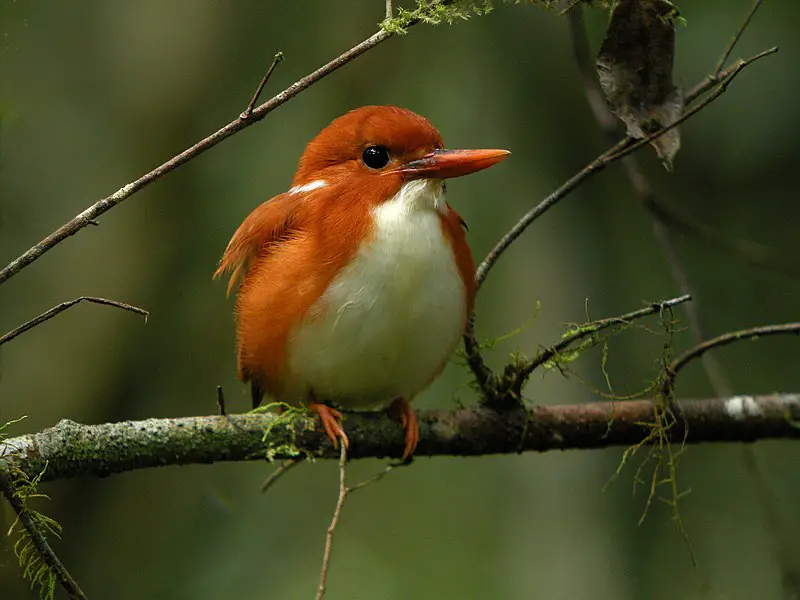
The Madagascar pygmy kingfisher is a beautiful species of bird endemic to the island nation. It was first described in 1758 by Swedish naturalist Carl Linnaeus, who named it Alcedo madagascariensis.
This small yet stunning creature can be found living within western dry deciduous forests and have an unmistakable deep blue-green plumage with white markings on its head and chest.
The wings feature orangey-red feathers that contrast against the more subtle coloring of their bodies, making them quite striking when seen from afar.
They feed primarily on insects which they catch midair or near water surfaces using their skillful aerial hunting techniques. These lovely birds are truly majestic creatures worthy of admiration and should be protected for future generations to enjoy.
Scientific classification:
| Kingdom | Animalia |
| Phylum | Chordata |
| Class | Aves |
| Order | Coraciiformes |
| Family | Alcedinidae |
| Subfamily | Alcedininae |
| Genus | Corythornis |
| Species | C. madagascariensis |
25. Lesser Vasa Parrot
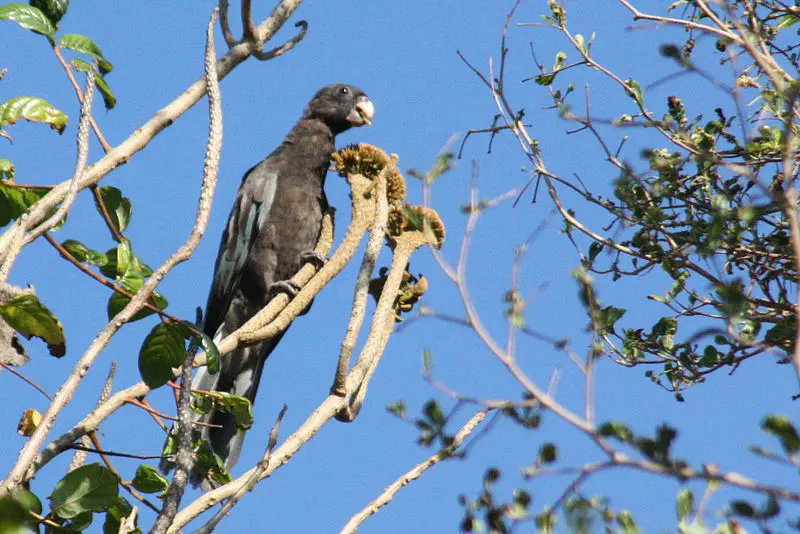
The Lesser Vasa Parrot is a black parrot native to Madagascar. It has three other close relatives, the Greater Vasa, Seychelles Black and Comoros Black Parrots.
These four species are all considered part of the same genus – Coracopsis. The Lesser Vasa Parrot is primarily arboreal and feeds on fruits, seeds and insects in its natural habitat.
They form strong pairs for life that can even be maintained after captivity release back into wild populations.
In addition to this they have an impressive vocal range with some individuals being able to imitate human speech quite clearly making them ideal pet birds as well as attractive ones too.
Scientific classification:
| Kingdom | Animalia |
| Phylum | Chordata |
| Class | Aves |
| Order | Psittaciformes |
| Family | Psittrichasiidae |
| Genus | Coracopsis |
| Species | C. nigra |
26. Ground Roller
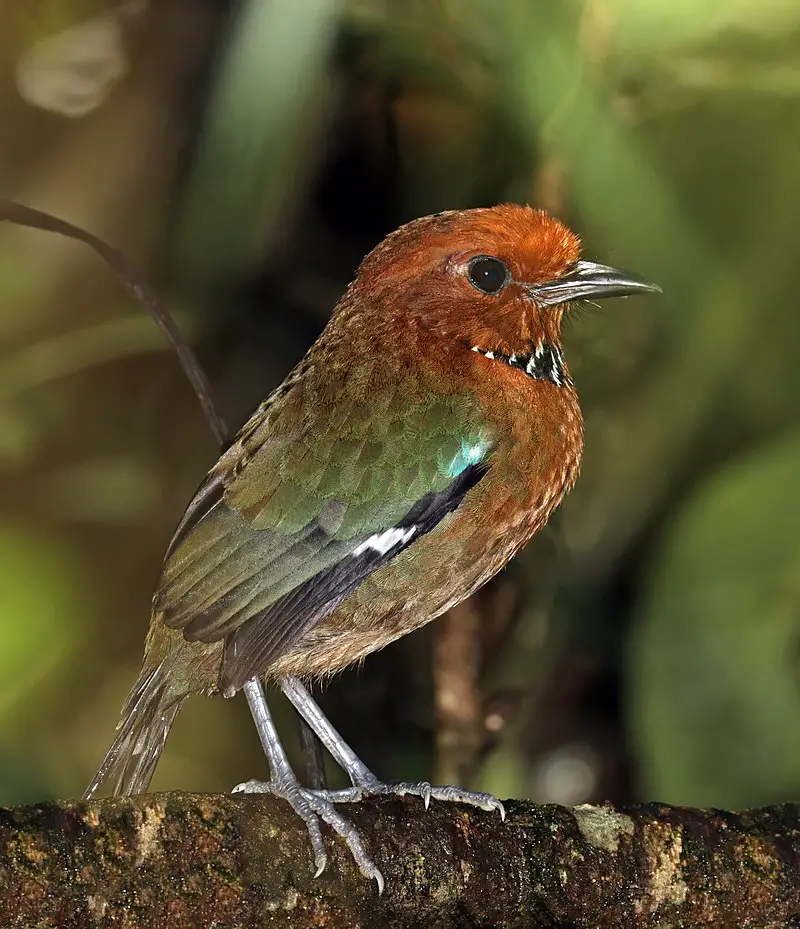
Ground rollers are one of the most sought after birds in Madagascar and can be a beautiful addition to any bird watchers collection. These near-passerine birds have an appearance similar to that of true rollers, usually measuring 25 – 49cm in length with a crow-like body size.
They live solely on the island and do not migrate elsewhere. Ground roller’s diet consists mostly of insects such as grasshoppers, beetles, dragonflies etc., but they also feed on spiders and small vertebrates like lizards or frogs occasionally.
Their calls are loud cackling noises which makes them easily identifiable during breeding season when their numbers swell up significantly due to migration from other parts of the island.
All in all, these little creatures add colour and vibrancy to Madagascan wildlife making it more enjoyable for visitors who come here looking for unique species.
Scientific classification:
| Kingdom | Animalia |
| Phylum | Chordata |
| Class | Aves |
| Order | Coraciiformes |
| Family | Brachypteraciidae Bonaparte, 1854 |
27. Madagascar Sparrowhawk
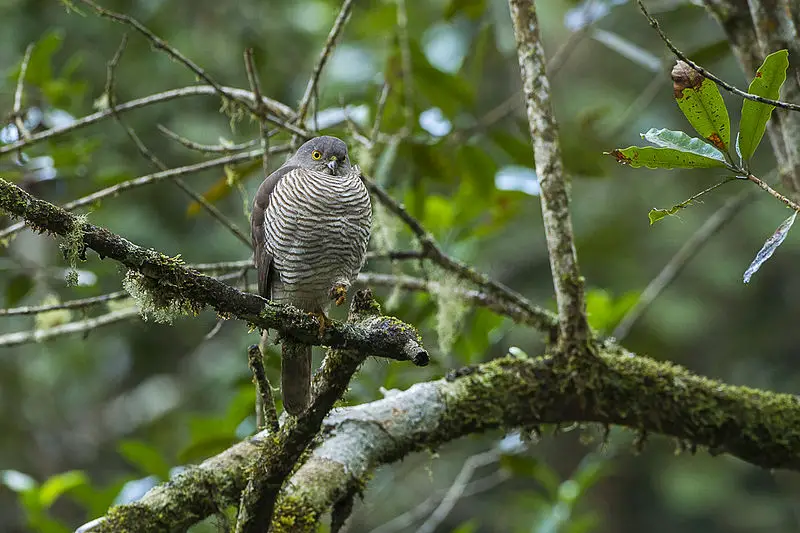
The Madagascar sparrowhawk is a species of bird of prey belonging to the Accipitridae family. It is native to Madagascar and its habitat consists of subtropical or tropical dry forest, moist lowland forests, montane forests, dry savannas and shrublands.
Unfortunately, it has become threatened due to extensive deforestation in the region. The adult birds have slate gray upperparts with white undersides which are barred blackish on their tail feathers. Their wingspan measures around 33-39 cm while they weigh an average of 100 gms.
They feed mainly on larger insects like dragonflies as well as small reptiles such as lizards & snakes; occasionally supplementing their diet with frogs and rodents too.
Breeding season for this raptor begins from October all through February where pairs will build nests high up in trees using twigs lined with soft material like downy feathers etc., These majestic hunters can be seen soaring above Madagascar’s lush landscapes looking for potential food sources & basking in sun during cooler days.
Scientific classification:
| Kingdom | Animalia |
| Phylum | Chordata |
| Class | Aves |
| Order | Accipitriformes |
| Family | Accipitridae |
| Genus | Accipiter |
| Species | A. madagascariensis |
28. Madagascar Buzzard
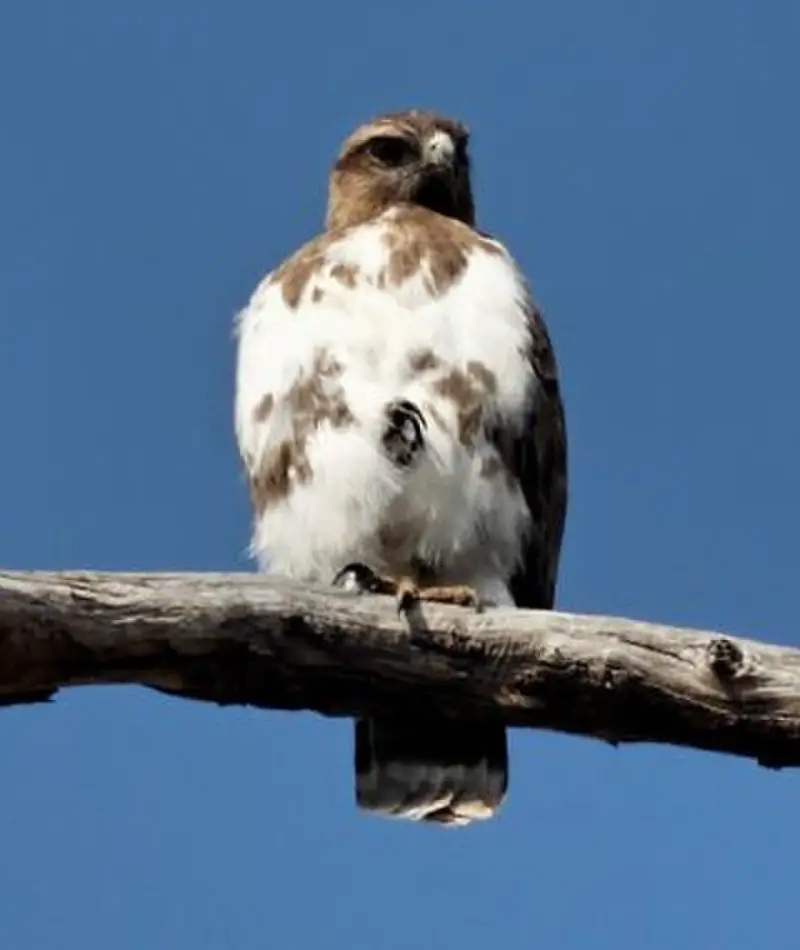
The Madagascar Buzzard is a species of bird of prey that is endemic to the island nation. It belongs to the Buteo genus, part of the Accipitridae family which includes other buzzards and hawks.
This species displays quite a lot varied plumage and has been considered similar in appearance to both its African forest buzzard counterparts as well as common Palearctic buzzards.
These birds have dark grey heads with white patches around their eyes, necks and throats along with underparts that are finely barred black-and-white patterned feathers.
Their wingspan can reach up to 48 inches long while they hunt for small mammals, reptiles or insects from perch points throughout forests or open fields on this beautiful tropical country’s terrain
Scientific classification:
| Kingdom | Animalia |
| Phylum | Chordata |
| Class | Aves |
| Order | Accipitriformes |
| Family | Accipitridae |
| Genus | Buteo |
| Species | B. brachypterus |
29. Pitta-Like Ground Roller
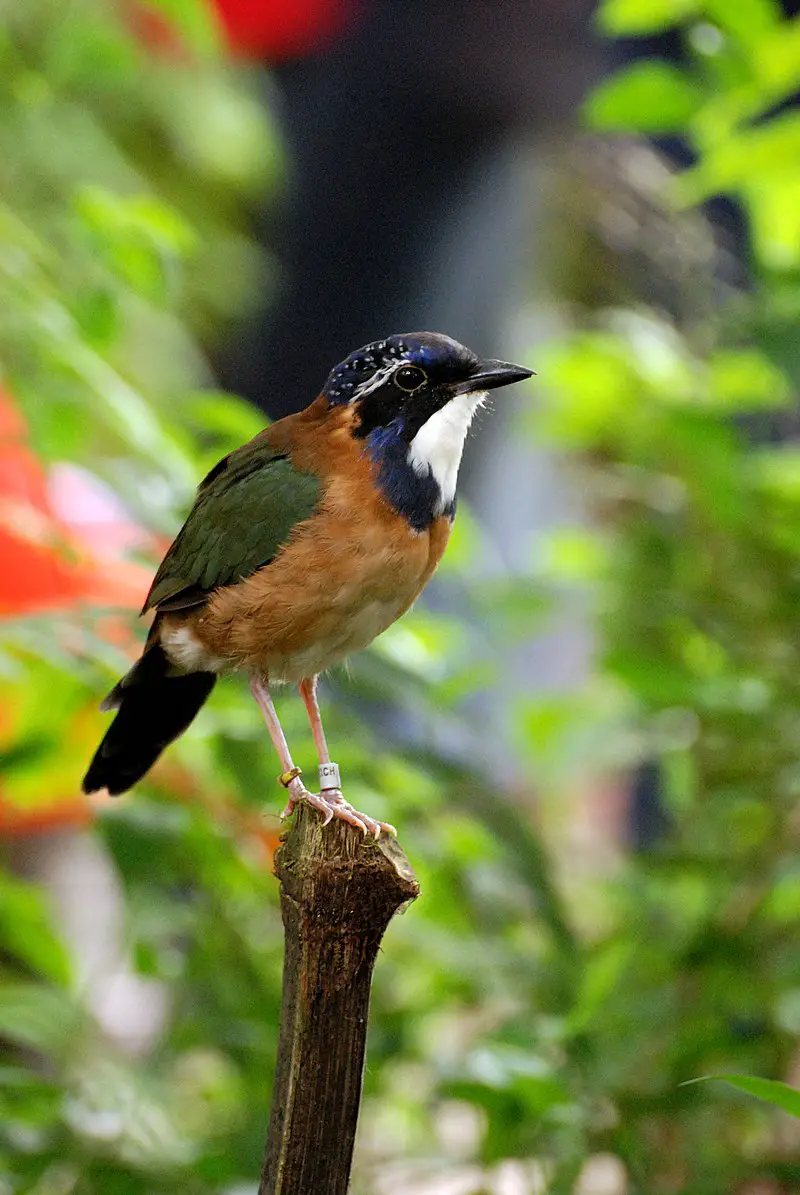
The Pitta-like ground roller is an endemic bird species found only on the island of Madagascar. It belongs to the family Brachypteraciidae and has no subspecies.
This fascinating creature was first described in 1834 by Frédéric de Lafresnaye, who noted its resemblance to pittas—unrelated passerines birds.
The Pitta-like ground roller stands out due to its unique plumage: a bright blue head, chestnut brown back and wings, black tail feathers with white tips, and buffy yellow underparts.
Its diet consists mainly of insects that it catches while walking along the forest floor or low branches; it also feeds on fruits during periods of abundance.
As one of Madagascar’s most iconic avian species, this remarkable bird plays an important role in maintaining healthy ecosystem balance within its habitat range.
Scientific classification:
| Kingdom | Animalia |
| Phylum | Chordata |
| Class | Aves |
| Order | Coraciiformes |
| Family | Brachypteraciidae |
| Genus | Atelornis |
| Species | A. pittoides |
30. Humblot’s Heron
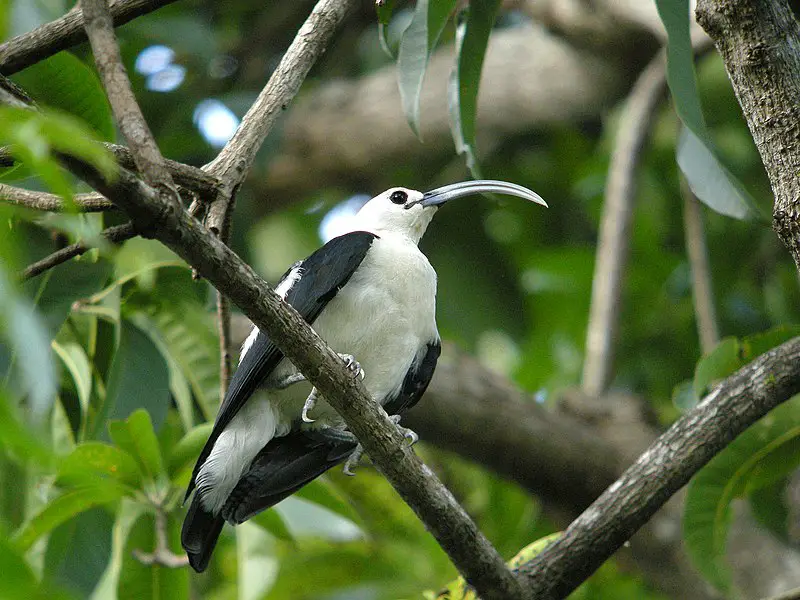
Humblot’s Heron is an exotic bird native to the African island of Madagascar. It is one of only two species in its genus, Ardea humbloti, and has a distinctively long neck and legs that are black with grey wings.
The plumage on their heads and necks range from dark brown to white depending upon age. They have yellowish eyes with blue facial skin around them which gives it an almost cartoon-like appearance.
Humblot’s herons feed mainly on small fish but also take crustaceans, frogs, insects as well as other aquatic organisms when available.
These birds nest among dense coastal vegetation; often near rivers or marshes making them vulnerable to habitat destruction due to human activities such as deforestation for agriculture leading these birds being listed by IUCN Red List of threatened species under “Least Concern” status
31. Madagascar Owl
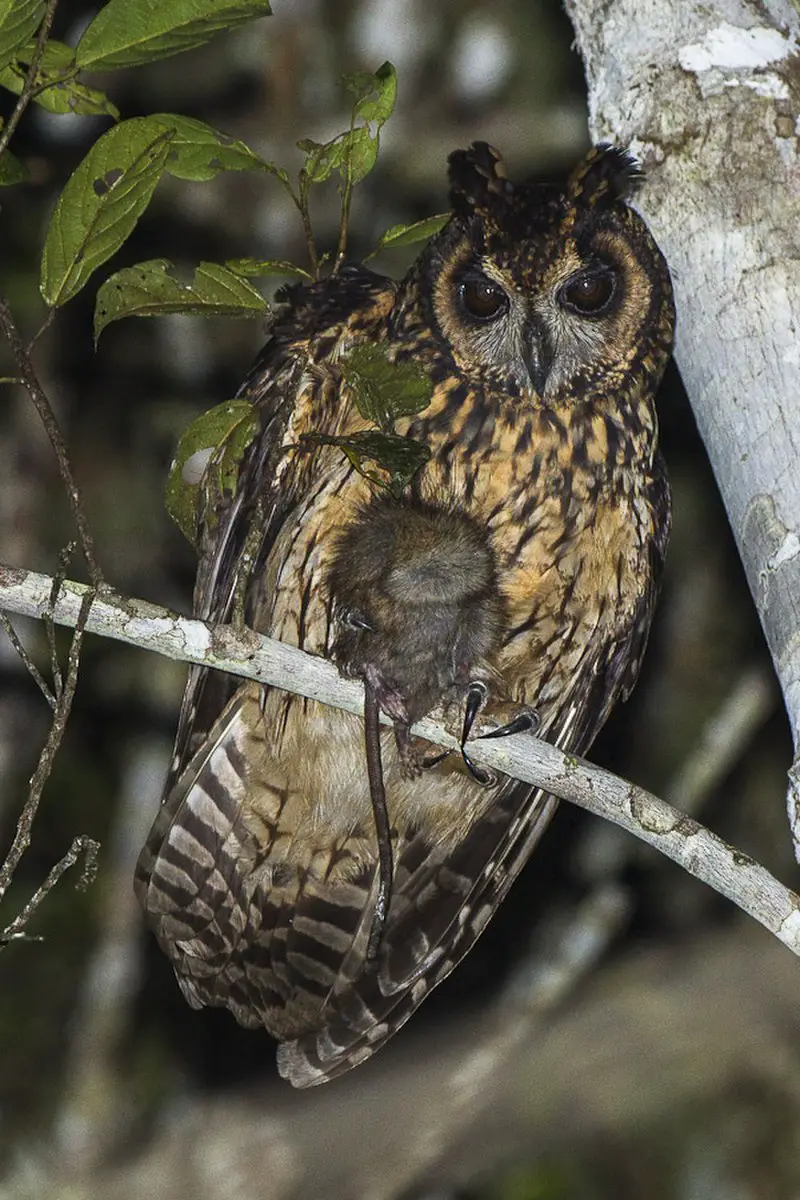
The Madagascar owl is an endemic species found on the island of Madagascar. This medium-sized bird has a stature similar to that of its Holarctic counterpart, the long-eared owl – with prominent ear tufts and tall posture when at rest.
Its plumage varies from shades of light brown to dark grey, while its underparts are creamy white in colour. It inhabits open habitats such as grasslands and savannahs where it hunts for small animals like rodents or amphibians during nighttime hours.
The Madagascar owl is one of many unique birds found only in this region; making conservation efforts essential for protecting these rare creatures against habitat destruction and illegal hunting activities.
Scientific classification:
| Kingdom | Animalia |
| Phylum | Chordata |
| Class | Aves |
| Order | Strigiformes |
| Family | Strigidae |
| Genus | Asio |
| Species | A. madagascariensis |
32. Malagasy Kestrel
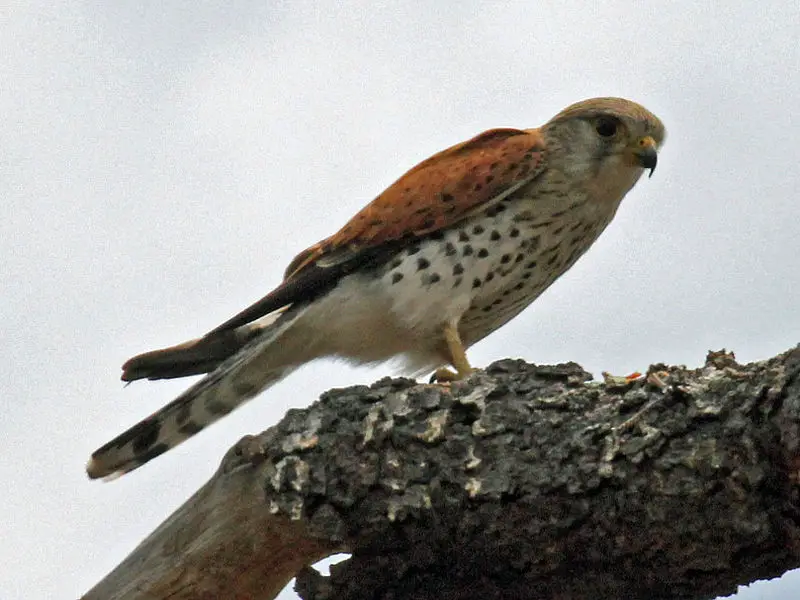
The Malagasy Kestrel is a small bird of prey found on the island of Madagascar, and at Aldabra. It has two subspecies with the race from Aldabra also called ‘Aldabra kestrel’.
The Malagasy Kestrel can be identified by its spotted black-and-white breast feathers and yellow legs. Its diet consists mostly of insects, lizards, frogs and other small creatures.
This species faces threats such as deforestation for logging or agriculture which destroys their habitat leading to population decline in some areas.
However conservation efforts have been made to protect this species from further endangerment including captive breeding programs and protected habitats where they are monitored regularly by local wildlife officials.
Scientific classification:
| Kingdom | Animalia |
| Phylum | Chordata |
| Class | Aves |
| Order | Falconiformes |
| Family | Falconidae |
| Genus | Falco |
| Species | F. newtoni |
33. Red-Capped Coua
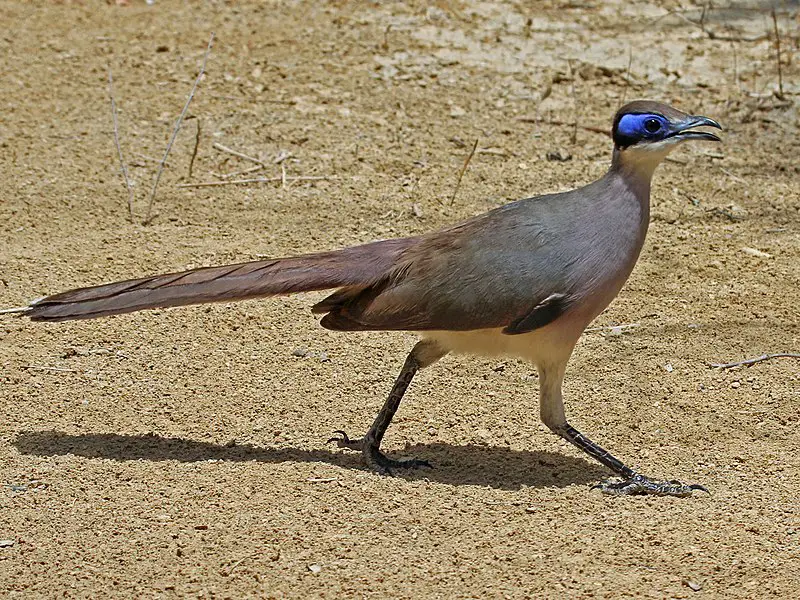
The Red-capped coua is a species of cuckoo found in Madagascar. It has distinctive red feathers on its head, making it easily identifiable from other birds.
This bird inhabits both dry and moist lowland forests, where they can search for food such as insects and small lizards. Due to deforestation projects occurring over the last few decades, this beautiful creature is being threatened with extinction if immediate action isn’t taken to protect its habitat.
Conservation efforts are underway to ensure that future generations will be able to experience these remarkable creatures in their natural environment.
Scientific classification:
| Kingdom | Animalia |
| Phylum | Chordata |
| Class | Aves |
| Order | Cuculiformes |
| Family | Cuculidae |
| Genus | Coua |
| Species | C. ruficeps |
34. White-Breasted Mesite
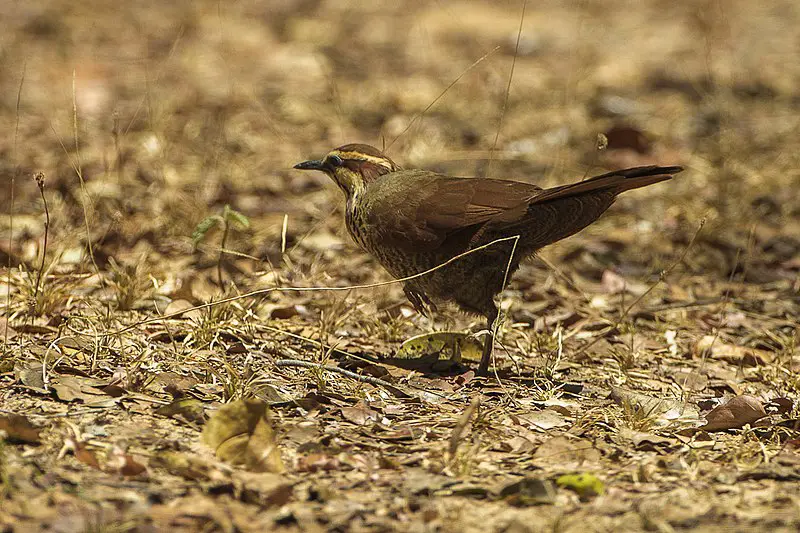
The White-breasted Mesite is a ground-dwelling bird that is endemic to Madagascar. It has an unmistakable appearance, with its small size and striking mottled gray plumage with white breast feathers.
This species is classified as vulnerable by the International Union for Conservation of Nature due to its low population numbers and limited range across just five sites in the north, west, and east of Madagascar.
The mesite feeds mainly on insects or other small invertebrates found on the forest floor but will also take some fruits when available. They live in pairs or family groups but can occasionally be seen alone during their daily activities such as gathering food, preening themselves, flying from one area to another or even bathing at waterholes.
Scientific classification:
| Kingdom | Animalia |
| Phylum | Chordata |
| Class | Aves |
| Order | Mesitornithiformes |
| Family | Mesitornithidae |
| Genus | Mesitornis |
| Species | M. variegatus |
35. White-Throated Rail
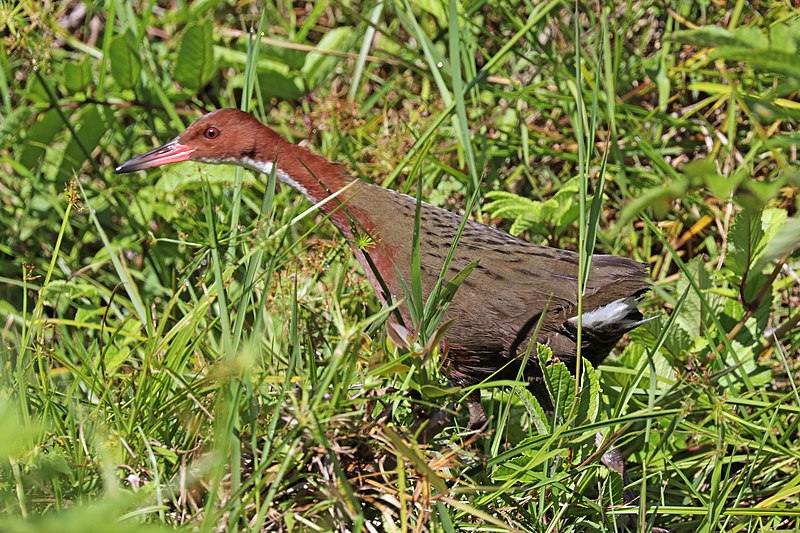
The White-throated rail, also known as Cuvier’s rail, is a species of bird found in the Comoros, Madagascar, Mayotte and Seychelles.
It has two subspecies: one that can fly (the nominate subspecies) that inhabits Madagascar; and another which is flightless or semi-flightless (D. cuvieri aldabranus), located on Aldabra Atoll.
They have white throats with black stripes atop their heads and necks to tell them apart from other Rallidae birds.
The upper parts are grayish brown while its underparts are reddish buff colored.
This species primarily forages in wetlands for insects but will occasionally eat some vegetation as well.
These birds breed during the wet season around November to April at low elevations near water sources such as marshes or swamps so they can find food more easily when raising their young chicks
Scientific classification:
| Kingdom | Animalia |
| Phylum | Chordata |
| Class | Aves |
| Order | Gruiformes |
| Family | Rallidae |
| Genus | Dryolimnas |
| Species | D. cuvieri |
36. Madagascar Cuckoo
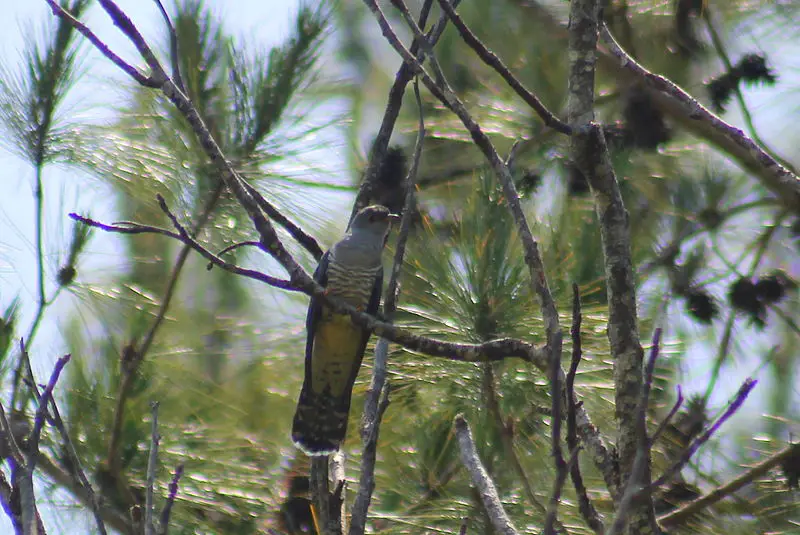
The Madagascar cuckoo, also known as the ‘Madagascar Lesser Cuckoo’ is a species of bird found in the family Cuculidae.
It breeds only on the island of Madagascar but spends its non-breeding season across several countries such African Great Lakes region and Indian Ocean islands including Burundi, Democratic Republic of Congo, Malawi, Rwanda , South Africa, Uganda and Zambia.
This small to medium sized bird has red eyes with a black bill.
Its upperparts are greyish brown while underparts are pale buff or white that gets darker towards lower abdomen area.
It feeds mainly on insects like caterpillars which it captures by gleaning from foliage or hovering over them before pouncing at them from above.
Scientific classification:
| Kingdom | Animalia |
| Phylum | Chordata |
| Class | Aves |
| Order | Cuculiformes |
| Family | Cuculidae |
| Genus | Cuculus |
| Species | C. rochii |
37. White-Browed Owl
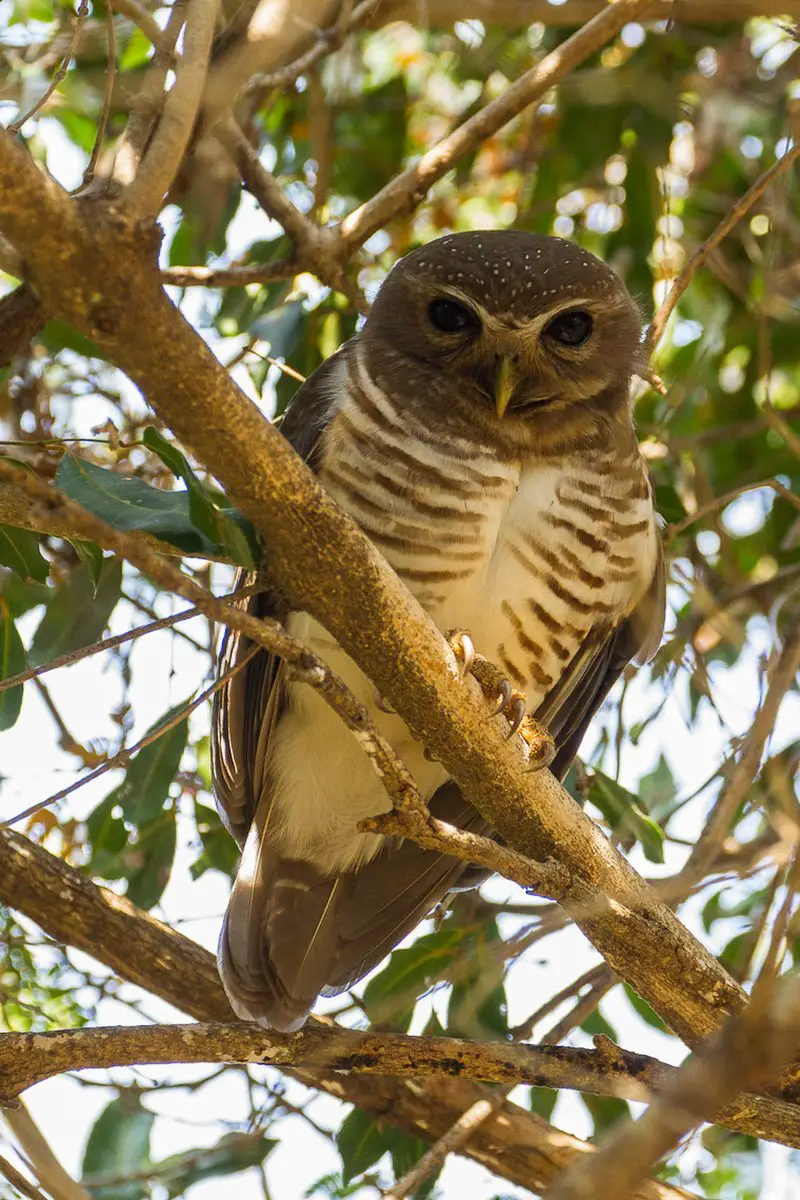
The White-browed Owl is a small and stocky bird found only in Madagascar. It belongs to the family Strigidae and was formerly placed within the genus Ninox.
Its distinguishing feature is its large, rounded head with white eyebrows which contrast against its pale brown plumage.
These owls are active during both night and day, hunting for insects, rodents and lizards amongst other prey items while perched on trees or flying low above the ground.
Their habitat consists of dry deciduous forests as well as secondary growth habitats such as plantations or scrubland near riversides; they have also been known to inhabit urban areas like parks or gardens too.
Scientific classification:
| Kingdom | Animalia |
| Phylum | Chordata |
| Class | Aves |
| Order | Strigiformes |
| Family | Strigidae |
| Genus | Athene |
| Species | A. superciliaris[1] |
38. Madagascar Snipe
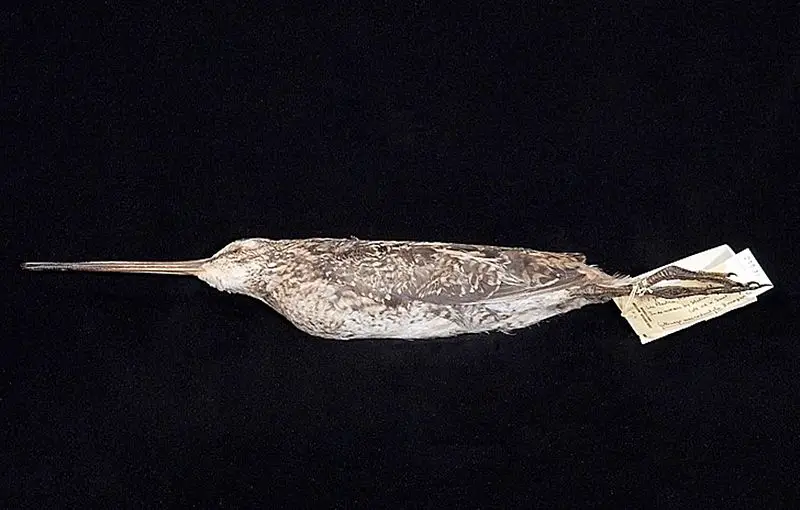
The Madagascar snipe is a distinctive bird found only in the eastern half of Madagascar. It measures 29–32 cm long and has stocky body with short legs for a wader.
The upperparts, head and neck are boldly striped with dark brown patterns which provide excellent camouflage against its natural habitats from sea level up to 2,700 m.
This species is non-migratory but more common above 700 m due to humid climate it needs to survive.
With small bill set at an angle near forehead, curved wings and large feet this nocturnal bird feeds on insects by probing or picking them off surfaces during night time while resting in cover during day time as well as roosting around water bodies or low vegetation.
A unique species among other birds.
Scientific classification:
| Kingdom | Animalia |
| Phylum | Chordata |
| Class | Aves |
| Order | Charadriiformes |
| Family | Scolopacidae |
| Genus | Gallinago |
| Species | G. macrodactyla |
39. Red-Fronted Coua
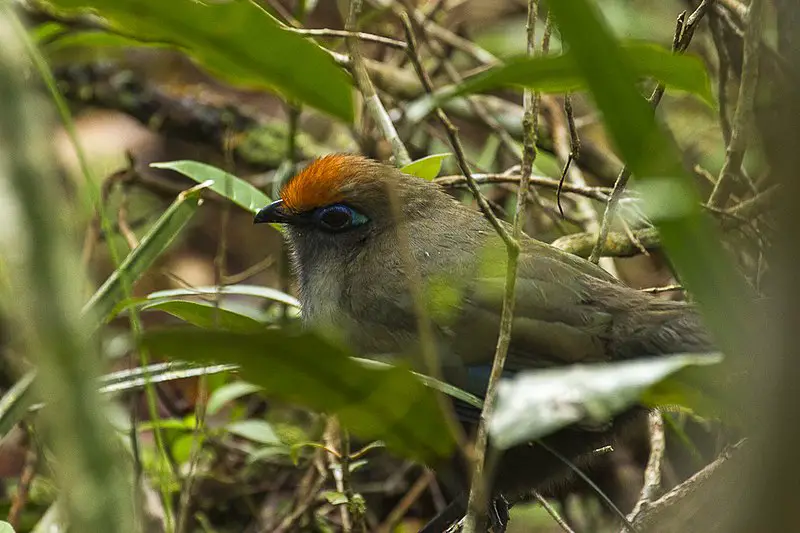
The Red-fronted coua is a stunning bird that is endemic to Madagascar. It belongs to the cuckoo family and its natural habitat consists of subtropical or tropical lowland forests.
Its body has an overall grey color, with striking red patches on its forehead and shoulders. The legs are yellowish in color while the beak ranges from black to orange-yellow depending upon age.
This species spends most of its time foraging among trees looking for food items such as insects, fruit and small reptiles which it feeds on by making short flights between branches followed by brief pauses during which they may remain motionless waiting for prey to appear within reach before quickly seizing them up in their bill tip.
These birds usually tend not stay still too long when spotted so getting clear images can prove quite difficult sometimes.
Scientific classification:
| Kingdom | Animalia |
| Phylum | Chordata |
| Class | Aves |
| Order | Cuculiformes |
| Family | Cuculidae |
| Genus | Coua |
| Species | C. reynaudii |
40. Red-Breasted Coua
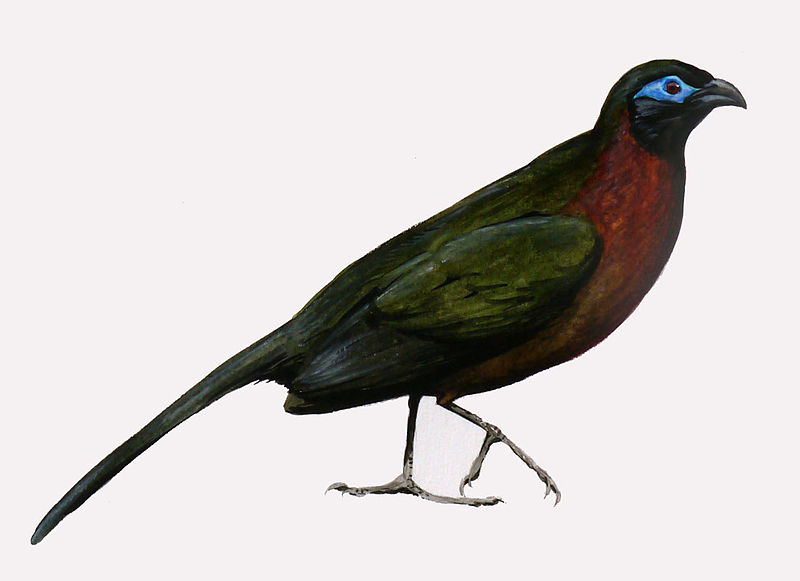
The Red-breasted coua is a species of cuckoo found only in Madagascar. It has striking plumage, with its bright red breast contrasting against its dark blue feathers on the head and wings.
Its tail is long and pointed, often fanned out when perched or flying. This bird typically dwells in dense forest habitats where it feeds mainly on fruits and nuts as well as small insects like grasshoppers which are caught by hawking from perches high up in tree canopies.
The Red-breasted coua plays an important role within the ecosystem through dispersal of seeds for many native plants across Madagascan forests; these are present inside their droppings after they have consumed fruit elsewhere.
These birds also provide natural pest control services due to their insectivorous diet helping maintain healthy ecosystems around them.
Scientific classification:
| Kingdom | Animalia |
| Phylum | Chordata |
| Class | Aves |
| Order | Cuculiformes |
| Family | Cuculidae |
| Genus | Coua |
| Species | C. serriana |
41. Madagascar Wood Rail
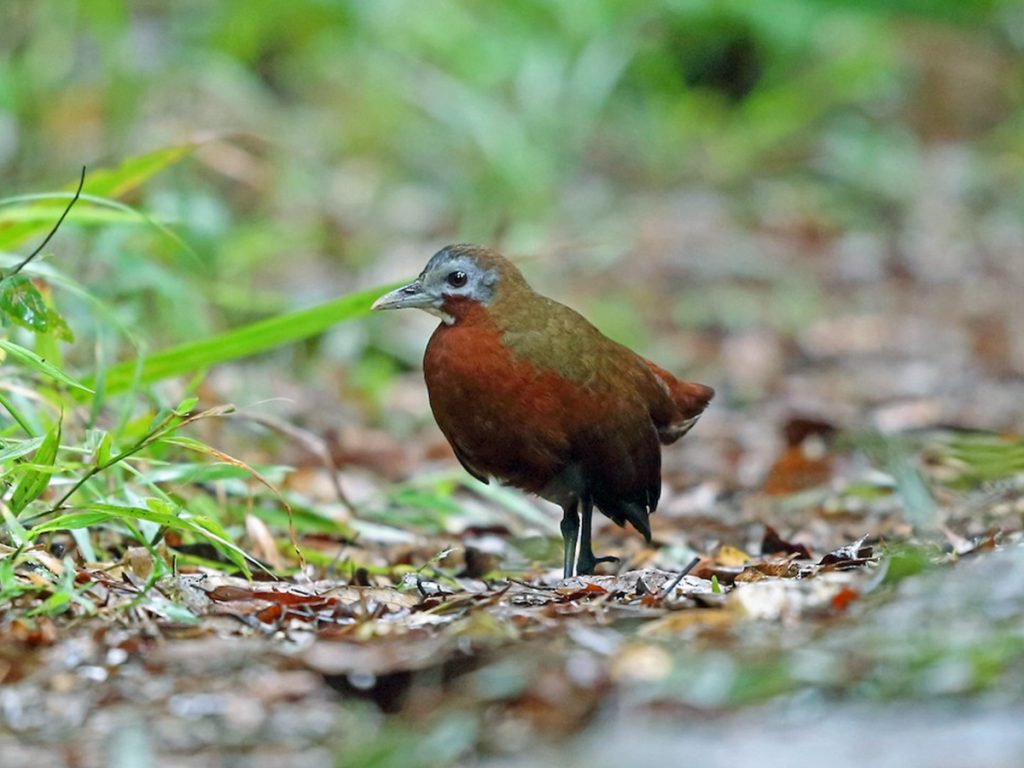
The Madagascar wood rail is a beautiful bird found in the forests of northern and eastern Madagascar. This shy species usually runs away when disturbed, making it challenging to study them.
They have reddish-brown plumage with dark wings and barred streaks on their back. These birds prefer wet areas for nesting, often living near water bodies or mangroves where they can find plenty of food such as insects, small fish and crustaceans to eat.
Their short legs make them clumsy fliers but excellent runners which helps them avoid predators like cats and snakes that hunt ground dwelling animals like these rails.
All together this makes the Madagascar wood rail an important part of its native ecosystem even if we don’t know much about it yet.
Scientific classification:
| Kingdom | Animalia |
| Phylum | Chordata |
| Class | Aves |
| Order | Gruiformes |
| Family | Sarothruridae |
| Genus | Mentocrex |
| Species | M. kioloides |
42. Rainforest Scops Owl
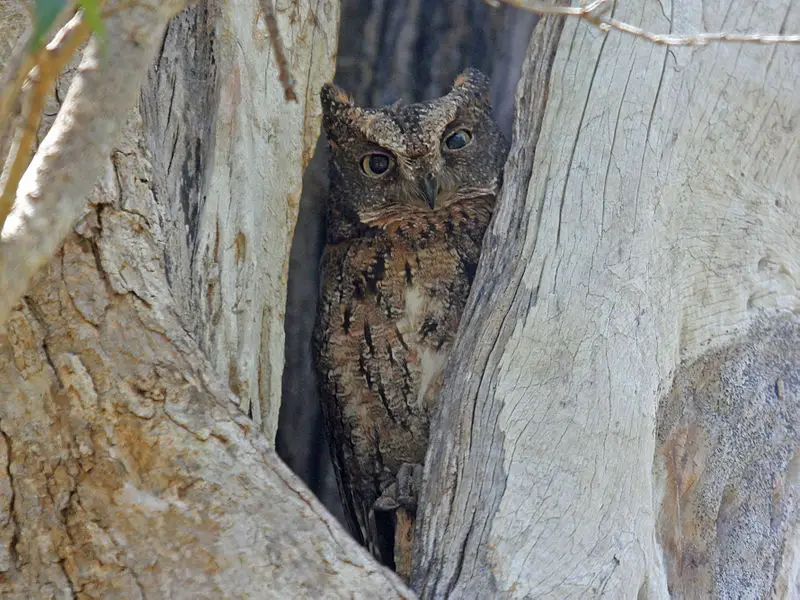
The Rainforest scops owl, scientifically known as Otus rutilus, is a species of small owl found in Madagascar and recently lumped with the Torotoroka scops owl.
It has large yellow-orange eyes that are fringed by white eyelashes. This bird also has pale brown upperparts and barred underparts which change to greyish-brown towards its legs.
Its wingspan ranges from 19–23 cm and it weighs around 46–63 gm when fully grown. The diet mainly consists of insects such as moths, beetles, grasshoppers etc., along with some small vertebrates like frogs or lizards at times too.
When threatened these owls prefer to remain still instead of flying away due to their rather weak flight abilities – however they can make loud screeching noises for protection if needed.
Scientific classification:
| Kingdom | Animalia |
| Phylum | Chordata |
| Class | Aves |
| Order | Strigiformes |
| Family | Strigidae |
| Genus | Otus |
| Species | O. rutilus |
43. Mesite
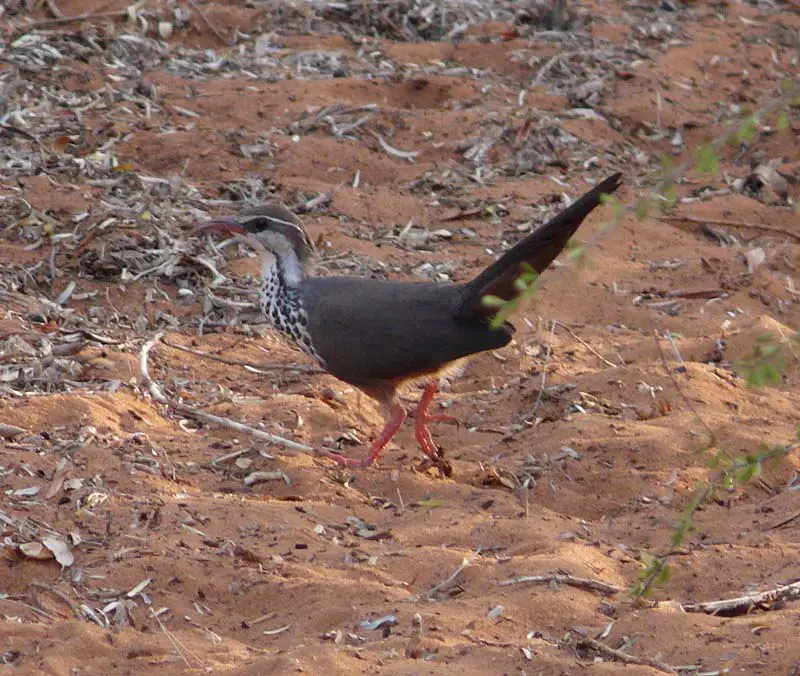
Mesites are a family of birds native to Madagascar and part of the Columbimorphae clade. They vary in size, but generally remain small and either flightless or nearly so.
All three species within this family (Brown Mesite, White-breasted Mesite, and Subdesert Mesite) are classified as vulnerable due to their declining numbers. These birds inhabit tropical forests or savannahs with dense vegetation near water sources like rivers or lakes – they often make use of thickets for nesting purposes.
The mesites’ diet consists mostly of invertebrates such as beetles, grasshoppers, worms and ants which they search for by scratching through leaf litter on the forest floor using their long beak tip adapted specifically from probing food items in soil substrates.
Scientific classification:
| Kingdom | Animalia |
| Phylum | Chordata |
| Class | Aves |
| Clade | Columbimorphae |
| Order | Mesitornithiformes Wetmore, 1960 |
| Family | Mesitornithidae Wetmore, 1960 |
44. Coraciiformes
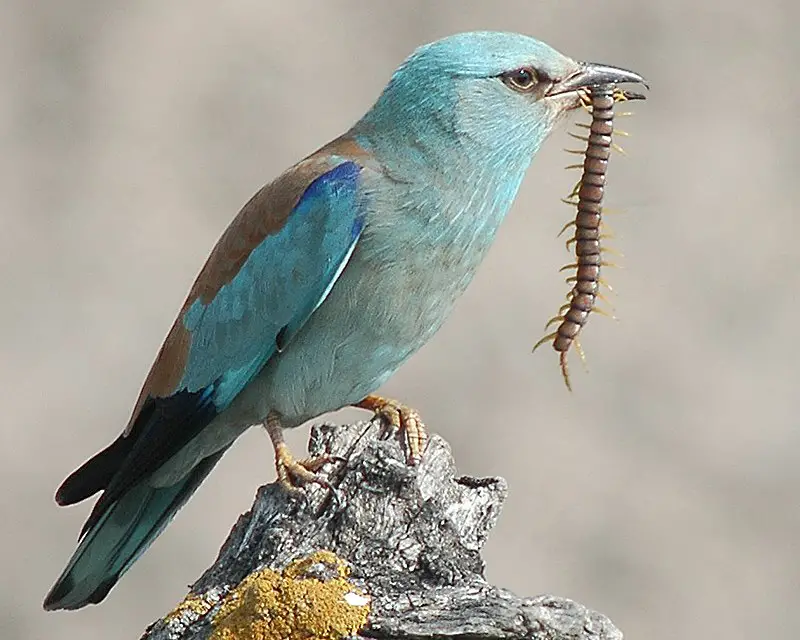
Coraciiformes birds are a group of beautiful and vibrant species, including kingfishers, bee-eaters, rollers, motmots and todies. They have syndactyly feet with three forward pointing toes (with their third and fourth fused at the base).
However in some kingfisher species one toe is absent. This order of bird has an interesting behavior known as ‘slamming’ which links them all together.
These amazing creatures can be seen across many parts of the world from forests to deserts.
Their colorful feathers make them stand out amongst other birds making sure they don’t go unnoticed.
Scientific classification:
| Kingdom | Animalia |
| Phylum | Chordata |
| Class | Aves |
| Clade | Picodynastornithes |
| Order | Coraciiformes Forbes, 1884 |
45. Short-Legged Ground Roller
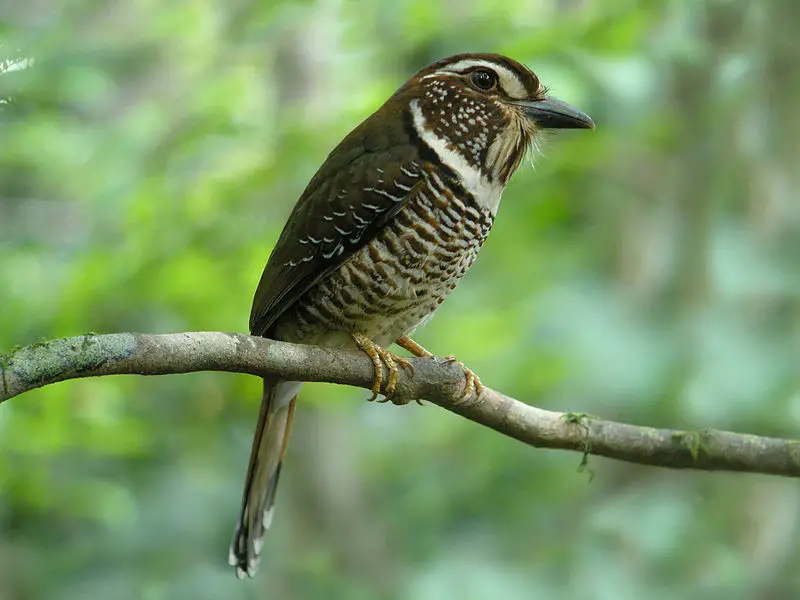
The Short-legged Ground Roller is a species of bird found only in Madagascar. It belongs to the ground roller family, Brachypteraciidae and is the sole living member of its genus.
This species faces threats due to habitat loss as well as other human activities that disturb their environment. The adult has brown plumage with black stripes on its wings, while juveniles are much paler than adults and have white spots on their head and neck.
They usually inhabit lowland forests but can also be seen at higher altitudes during migration season. Their diet consists mainly of insects which they catch by hovering over short grasses or through foliage gleaning from trees branches.
This unique bird plays an important role in seed dispersal thus helping sustain local ecosystems habitats for native plants and animals alike
Scientific classification:
| Kingdom | Animalia |
| Phylum | Chordata |
| Class | Aves |
| Order | Coraciiformes |
| Family | Brachypteraciidae |
| Genus | Brachypteracias |
| Species | B. leptosomus |
46. Eleonora’s Falcon
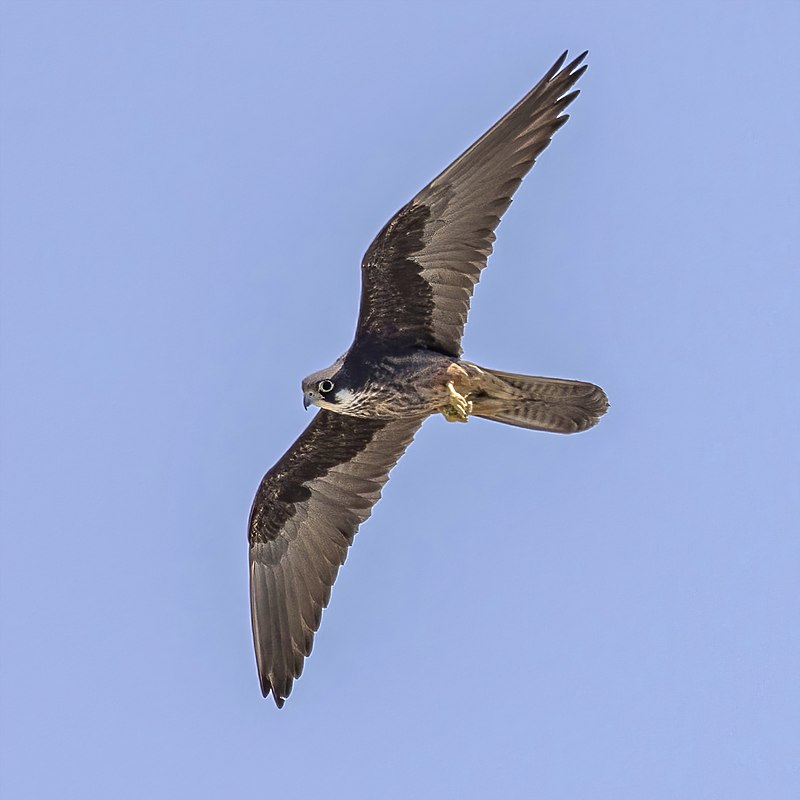
Eleonora’s falcon is a medium-sized bird of prey that belongs to the hobby group of similar species. It has distinct features such as its light brown back, white belly and dark eye stripe.
This stunning creature can be found in parts of Europe, North Africa and Asia Minor where it feeds mainly on lizards, large insects and small birds.
Its conservation status is currently stable due to successful breeding programs across many countries which have helped prevent any further declines in population size.
Eleonora’s Falcon also plays an important role in maintaining balance within ecosystems by controlling pest populations like mice or locusts.
All these attributes make this beautiful raptor a truly remarkable animal worthy of admiration.
Scientific classification:
| Kingdom | Animalia |
| Phylum | Chordata |
| Class | Aves |
| Order | Falconiformes |
| Family | Falconidae |
| Genus | Falco |
| Species | F. eleonorae |
Also Featured In: Birds that Live in Croatia, Birds of Lanzarote
47. African Black Swift
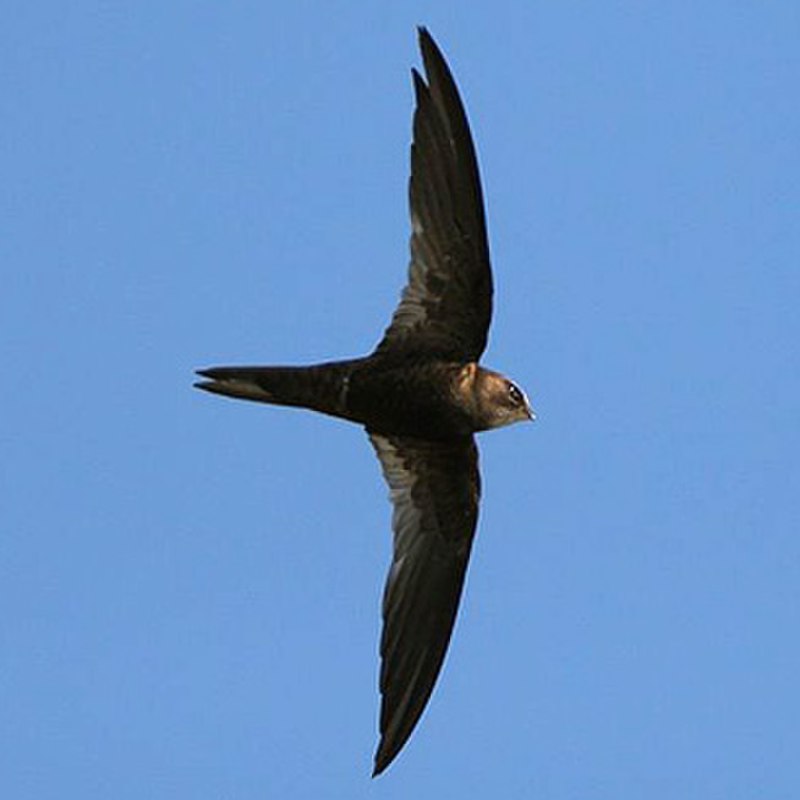
The African black swift is a fascinating bird belonging to the swift family. It can be found in various regions of Africa, ranging from Liberia and Cameroon, all the way southwards to South Africa.
Its plumage varies between individuals – some having almost completely black feathers while others have greyer tones with white bellies.
The wings are relatively long, allowing it to fly at great speeds through open skies or along rocky cliffsides where they typically nest during breeding season.
As such their diet consists primarily of flying insects which they catch mid-air.
Their conservation status currently stands as least concern due to its large population size; however we should continue monitoring them closely so that future generations may also appreciate this remarkable creature
Scientific classification:
| Kingdom | Animalia |
| Phylum | Chordata |
| Class | Aves |
| Order | Apodiformes |
| Family | Apodidae |
| Genus | Apus |
| Species | A. barbatus |
48. Sooty Falcon
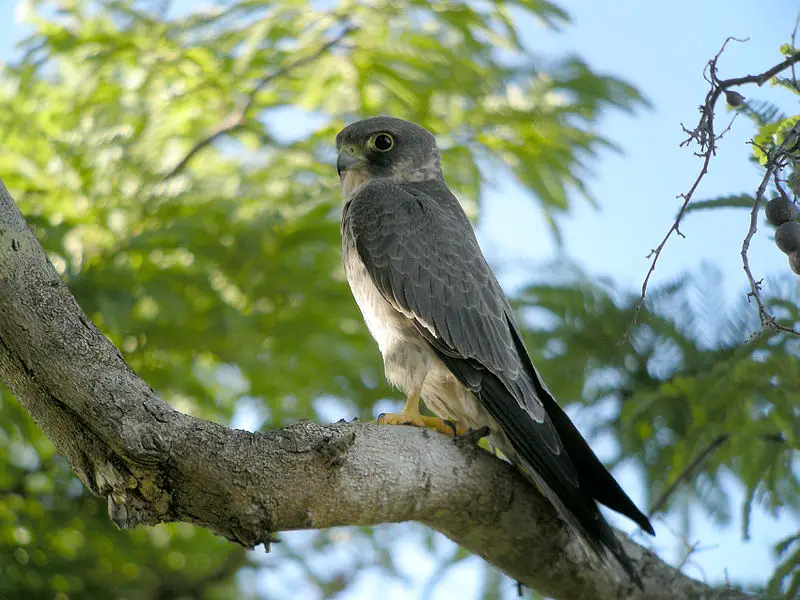
The Sooty Falcon is a medium-sized bird of prey that can be found in the arid regions of northeastern Africa and southern Persian Gulf region. The name comes from its dark soot colored plumage, which provides camouflage while hunting.
It belongs to the order Falconiformes, family Falconidae and genus Falco. This species is known for its strong flight capabilities; they often soar up high looking for their food sources such as small birds or rodents on the ground below them.
They also have sharp talons and powerful beak used to capture their prey with ease.
These raptors are an important part of local ecosystems by controlling rodent populations and providing people with opportunities for falconry sport (hunting).
In addition, due to their attractive coloring they are popular amongst birdwatchers who appreciate these majestic creatures when seen in nature.
Scientific classification:
| Kingdom | Animalia |
| Phylum | Chordata |
| Class | Aves |
| Order | Falconiformes |
| Family | Falconidae |
| Genus | Falco |
| Species | F. concolor |
49. Malagasy White-Eye
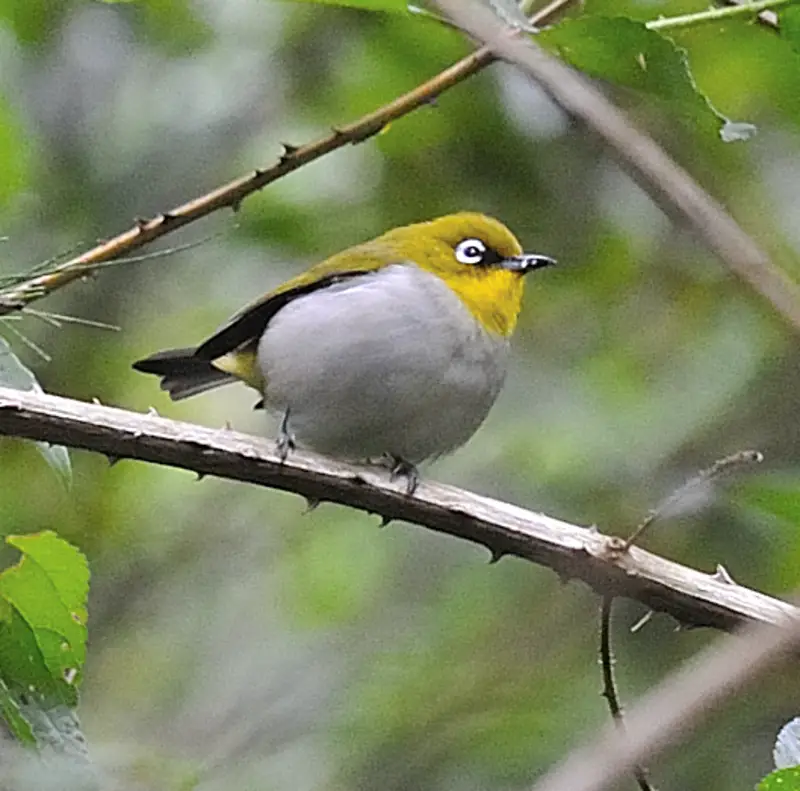
The Malagasy white-eye is a mesmerizing bird species found in Madagascar and Seychelles. This small, lively creature resides mainly in subtropical or tropical dry forests, lowland forests, mangrove forests and montane forests.
It was first documented by French zoologist Mathurin Jacques Brisson back in 1760. The Malagasy white-eye has yellow eyes with black pupils surrounded by a thin ring of pale blue feathers which gives it an unforgettable charm.
Its body is olive-green while its wings are brownish grey on the upper side with lighter shades underneath; additionally they have distinctive wing bars consisting of creamy off whites and dark greys.
All these features make this beautiful little bird quite unique amongst other birds of its kind.
Scientific classification:
| Kingdom | Animalia |
| Phylum | Chordata |
| Class | Aves |
| Order | Passeriformes |
| Family | Zosteropidae |
| Genus | Zosterops |
| Species | Z. maderaspatanus |
50. Common Sunbird-Asity
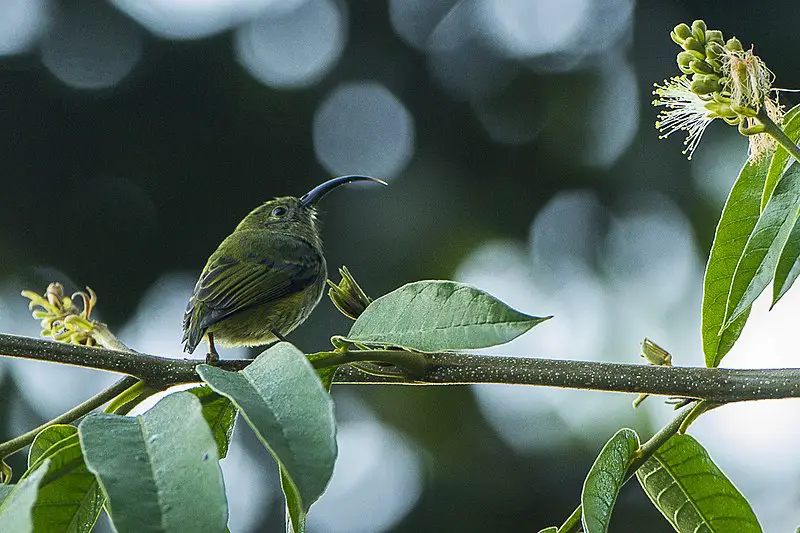
The Common sunbird-asity is a small bird native to Madagascar, belonging to the family Philepittidae. It has a short tail and thin, strongly curved bill which become more distinct during the breeding season when males are easily distinguishable by their bright colouration.
They inhabit subtropical or tropical moist lowland forests where they feed on nectar from flowers. The male’s vibrant colours of black, yellow and blue make them stand out amongst vegetation while females tend to be duller in colour with greenish hues running through their feathers.
This species is an important pollinator for many plants in its natural habitat as it moves between different flowering shrubs and trees.
Scientific classification:
| Kingdom | Animalia |
| Phylum | Chordata |
| Class | Aves |
| Order | Passeriformes |
| Family | Philepittidae |
| Genus | Neodrepanis |
| Species | N. coruscans |
51. Coquerel’s Coua
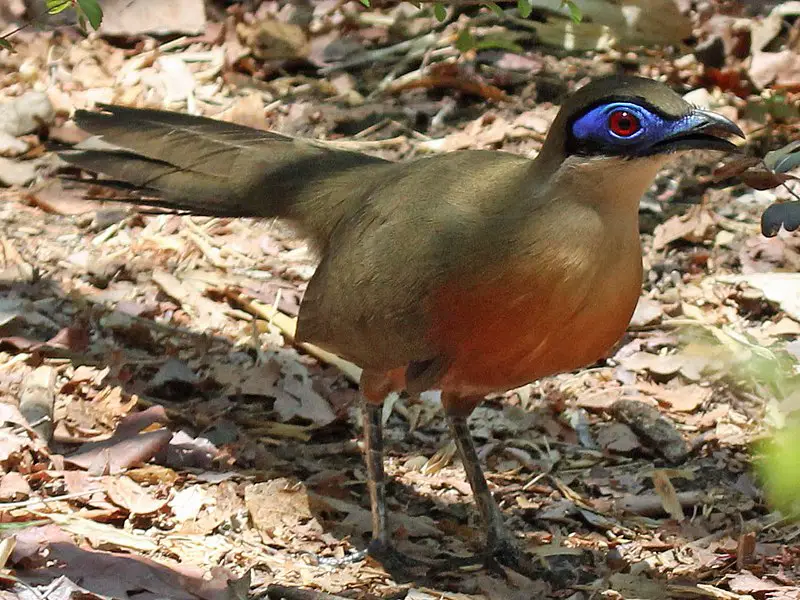
Coquerel’s coua is a species of cuckoo native to the subtropical or tropical dry forests of Madagascar. With an impressive length of 40 cm (16 in), it stands out with its large blue patch of bare skin around each eye, giving it its distinctive look.
This bird was named after French navy surgeon and naturalist Charles Coquerel by Alfred Grandidier in 1867 as recognition for his contribution to zoology. Sadly, this species has been classified as vulnerable due to hunting and habitat loss caused by deforestation occurring on the island nation over recent decades.
Conservation efforts are needed if we want future generations to enjoy this unique piece of biodiversity.
Scientific classification:
| Kingdom | Animalia |
| Phylum | Chordata |
| Class | Aves |
| Order | Cuculiformes |
| Family | Cuculidae |
| Genus | Coua |
| Species | C. coquereli |